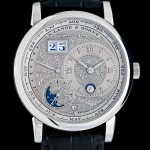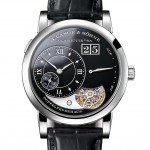Highlights: A. Lange & Söhne Exceptional Masterpieces of Handwerkskunst
Complications and artisanal crafts.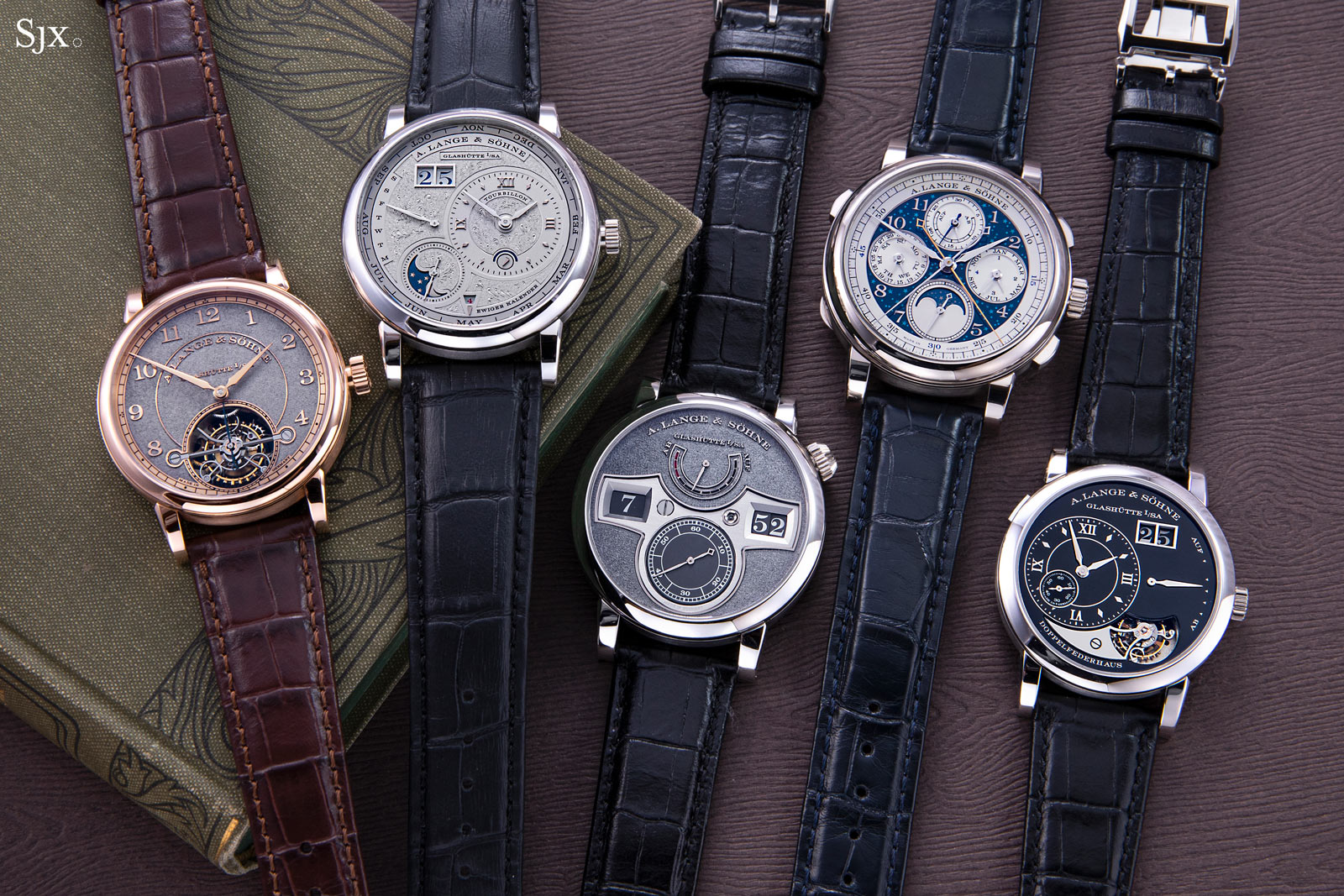
An exhibition dedicated to limited-edition watches from A. Lange & Söhne, Exceptional Masterpieces recently concluded after a five-day run in Singapore. The event was fully subscribed every day it was open, but attendance was limited due to health regulations.
Amongst the watches on show were all the Handwerkskunst limited editions. German for “craftsmanship”, handwerkskunst is an apt label for the series, which is made up of watches featuring artisanal decoration executed by hand, most often engraving but also enamelling on occasion.
Inaugurated a decade ago, the series is now a family of seven watches, but each model was limited to no more than 30 pieces, which means the entire series totals less than 200 watches, making them amongst the rarest of Lange watches. So for anyone who missed out on the exhibition, here’s a look at five of our favourite Handwerkskunst editions.
(For an in-depth look at each of the Handwerkskunst watches, see our definitive guide to the series published in 2020.)
2012 – Zeitwerk Handwerkskunst (ref. 140.048)
The second of the series, the Zeitwerk Handwerkskunst very much stuck to the formula set established by opening act, the Richard Lange Tourbillon Pour le Mérite Handwerkskunst. While the mechanics remained almost identical, the decoration an upgraded over the standard version with elaborate engraving on both the front and back, but executed in a restrained manner that embodies the low-key style of the German watchmaker.
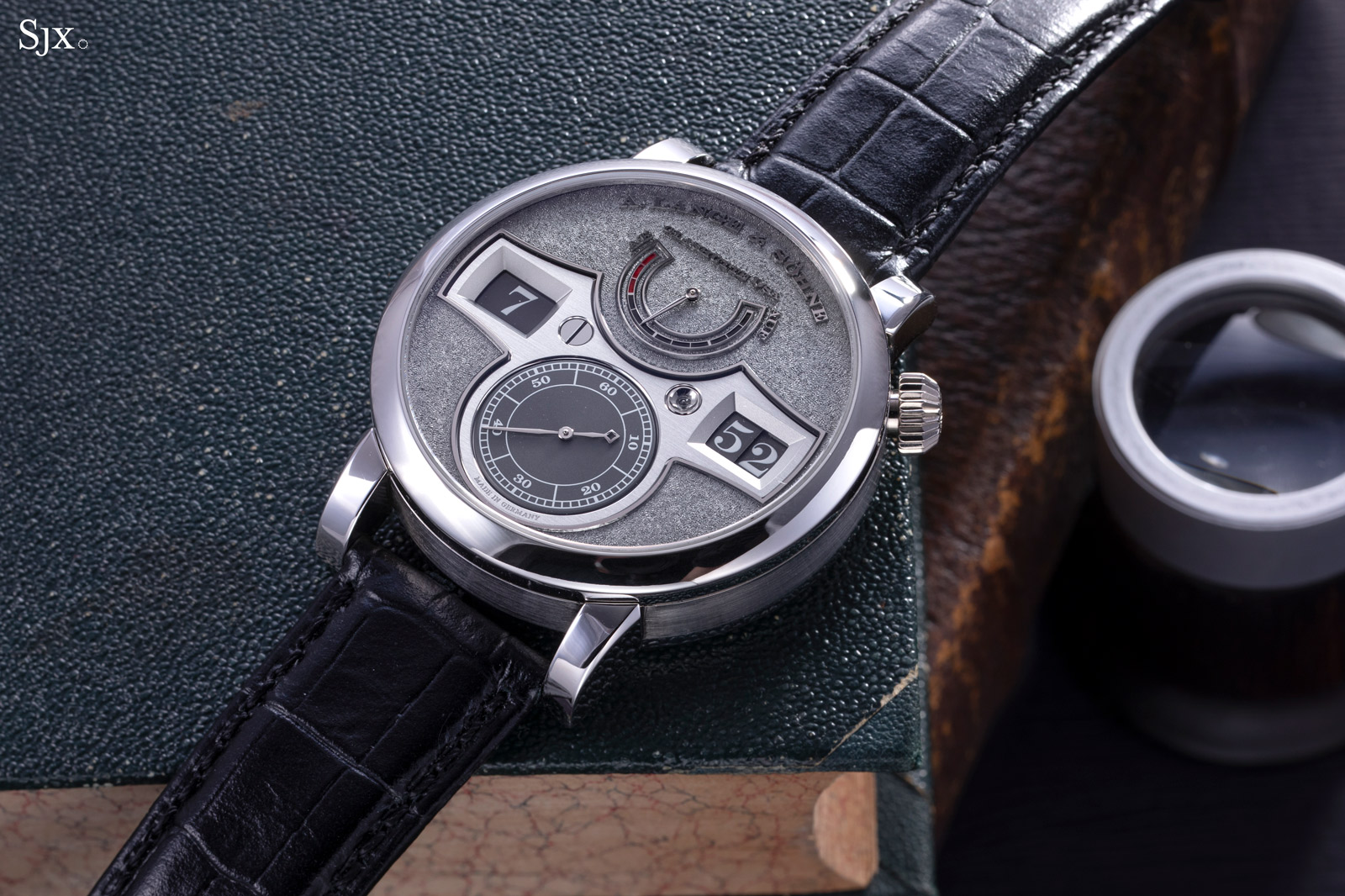
Precious metal through and through – the case is platinum, while the dial is white gold coated in dark rhodium
With a pronounced grained finish that’s found in almost all models of the series, the dial immediately gives away its Handwerkskunst provenance. Known as tremblage, the finish is more painstaking than the fine graining suggests – it is made up of dimples, each carefully removed by hand from the surface of solid white gold disc. Like most engraving, tremblage is achieved with a burin.
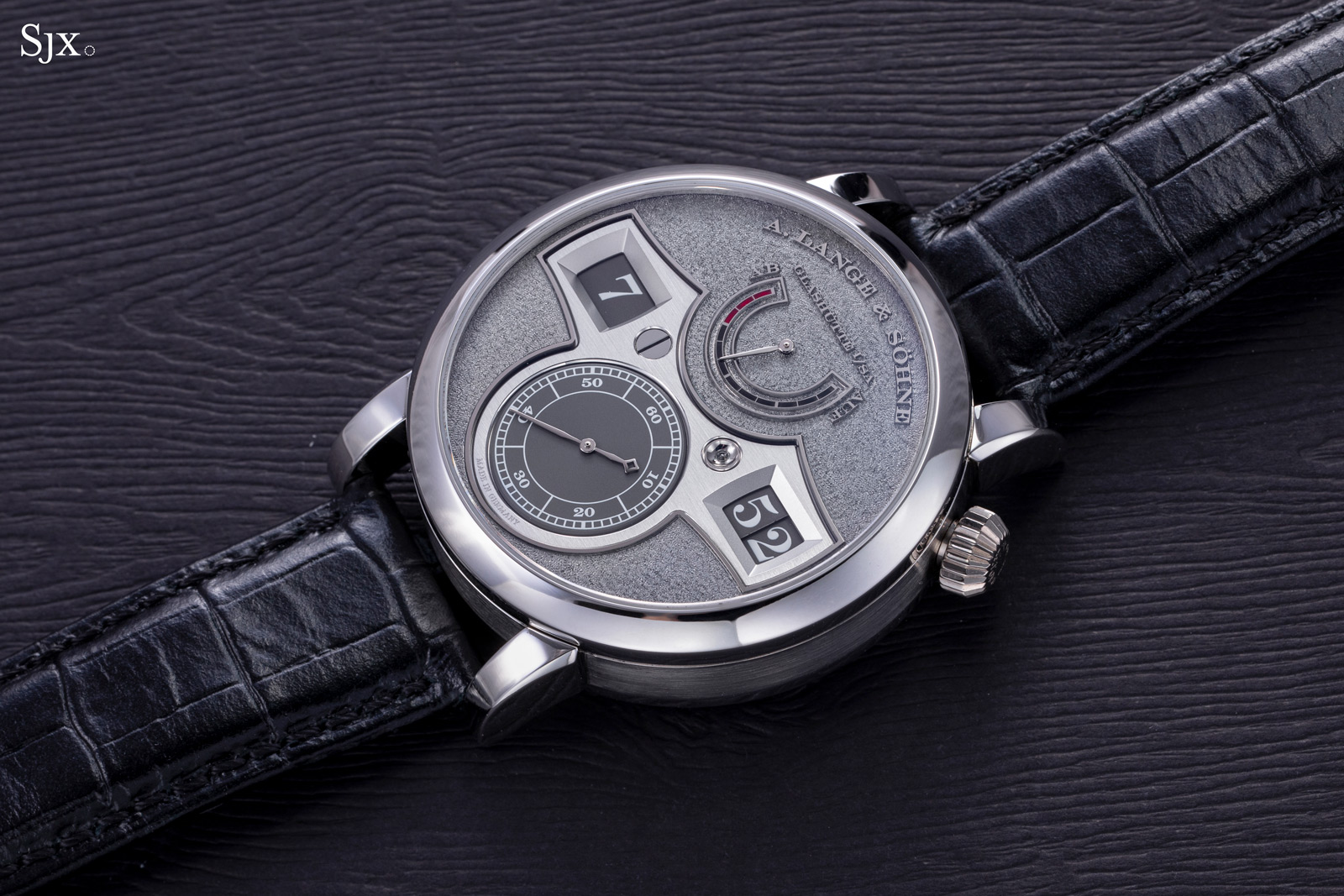
The engraved white gold dial is then coated in dark rhodium, leaving the watch looking stealthy
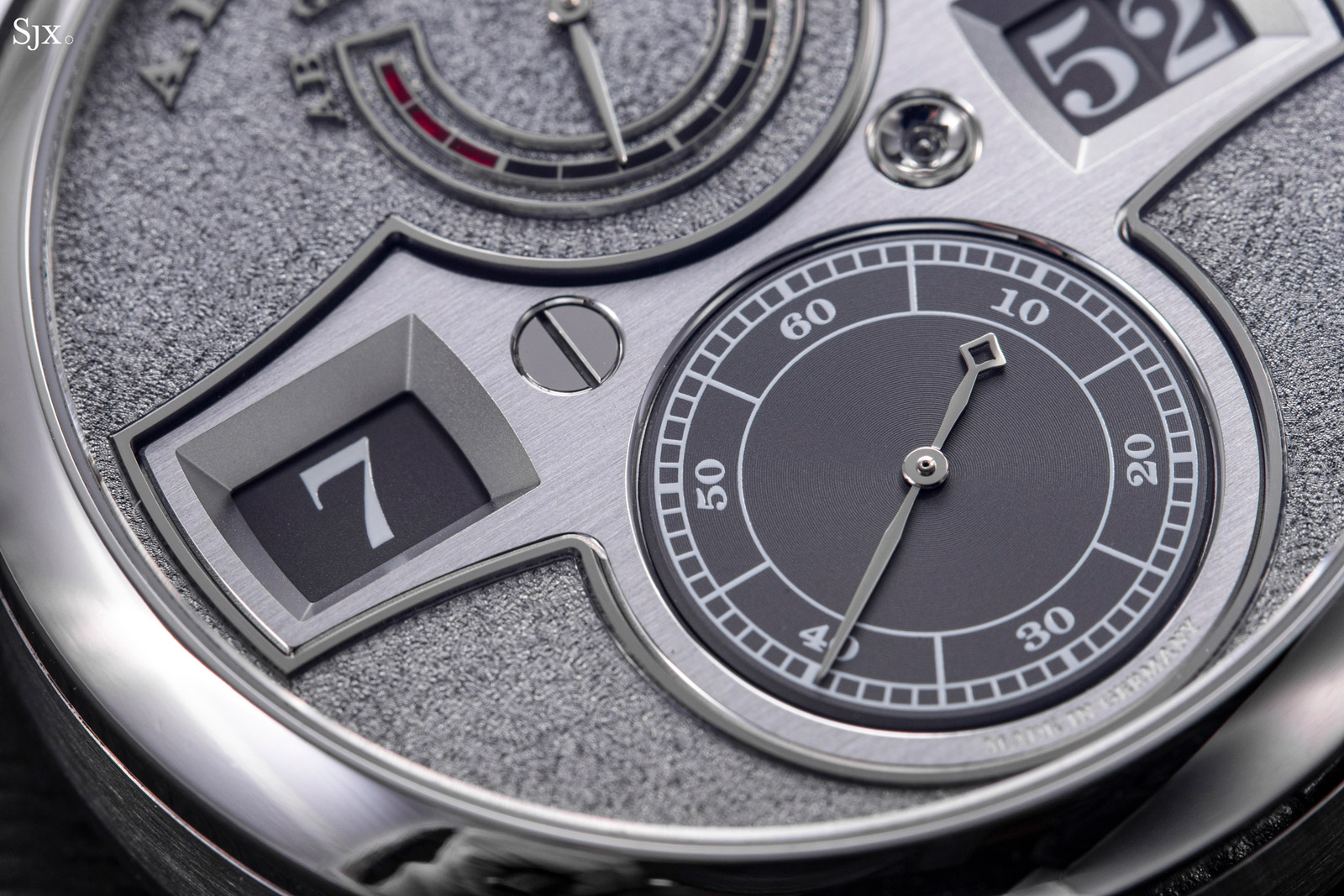
The bevelling on the time-display bridge gives the dial extra polish that goes well with the slightly sparkly dial
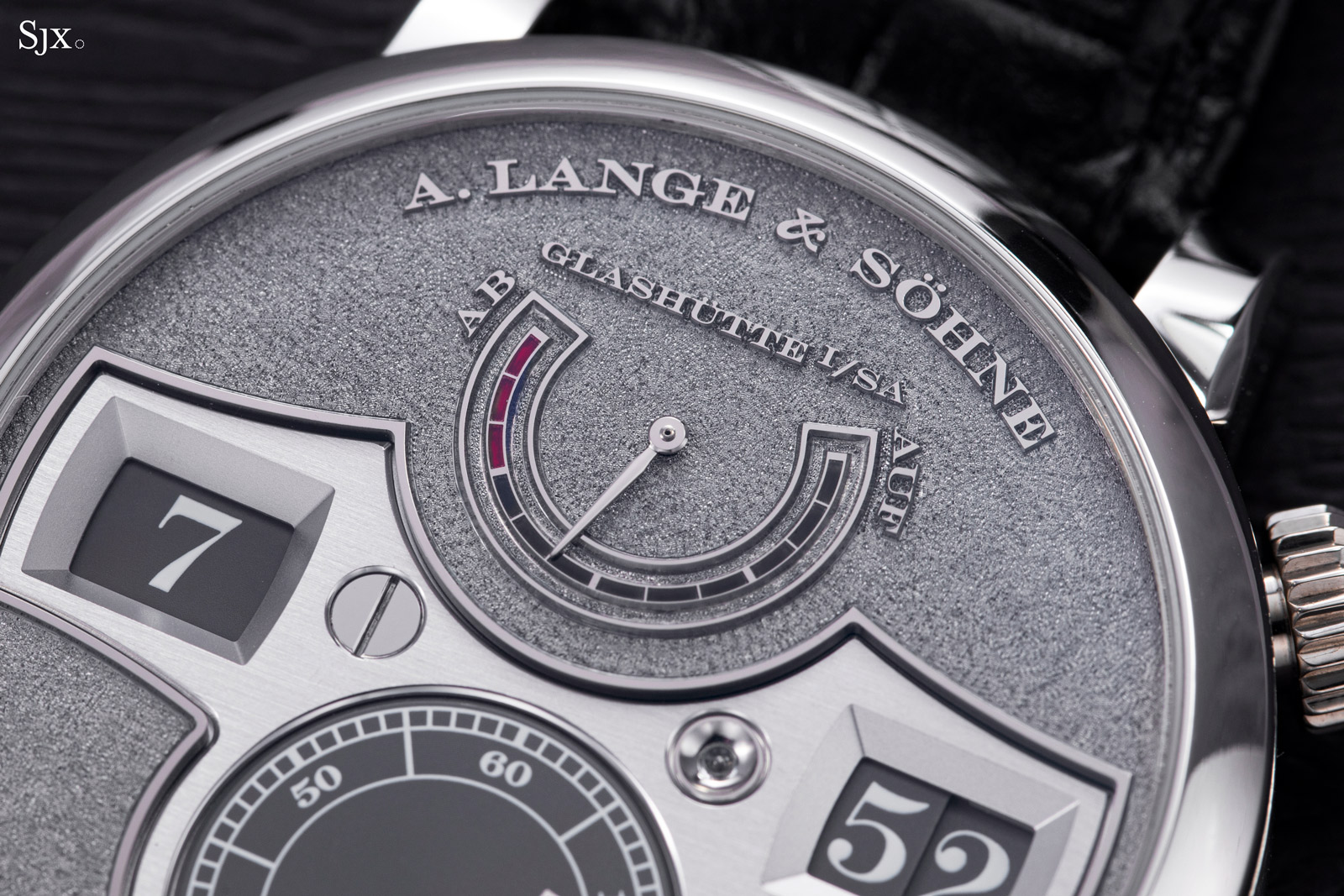
The lettering and power reserve scale are all rendered in relief
As with the dial, the L043.4 is adorned with hand-engraving not found on the standard production counterpart, the L043.1. All of the markings on the bridges are engraved by hand, instead of being done by machine as is the case for the regular production version. And the barrel bears the brand name in relief, while the winding wheels have a solarised finish.
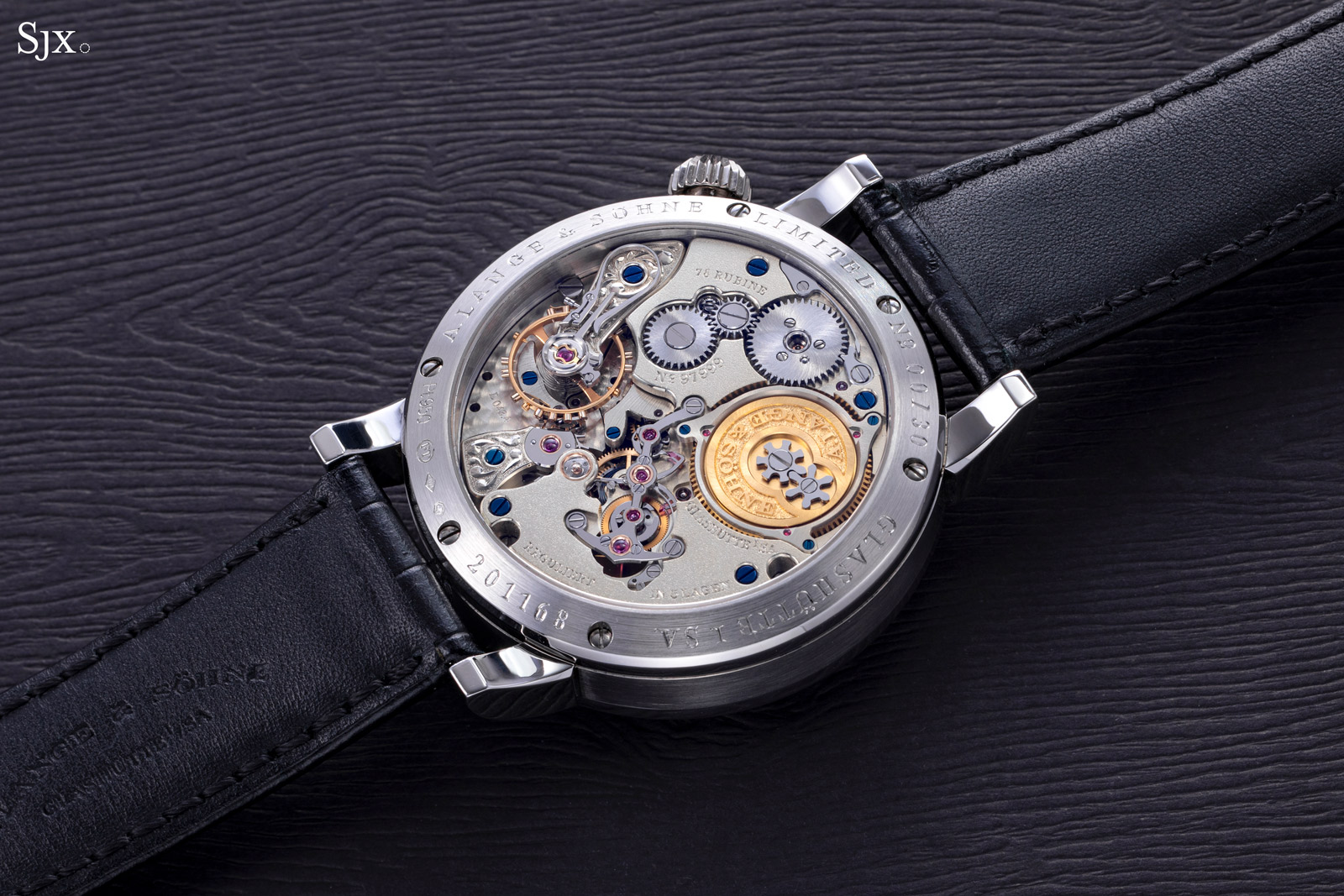
Thirty pieces were made, twice as many as the first Handwerkskunst edition
Interestingly, the movement also incorporates a tiny technical upgrade: a Glashütte pallet lever replaces the Swiss pallet lever. While the difference between the two are merely small changes in geometry, it was a challenged to pull off as the methods for producing such a pallet lever was long forgotten and had to be revived with help from a former employee who was already in her nineties.
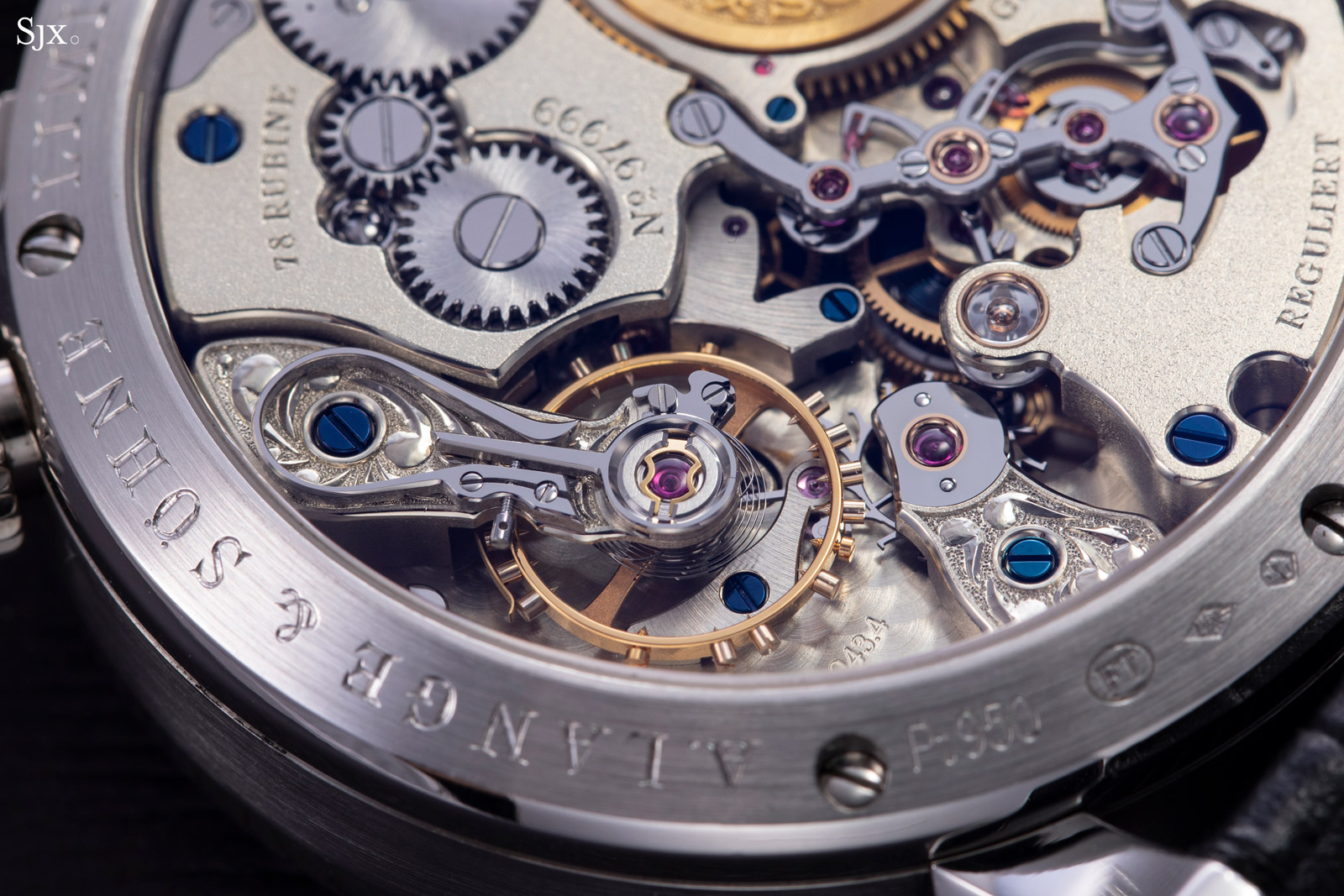
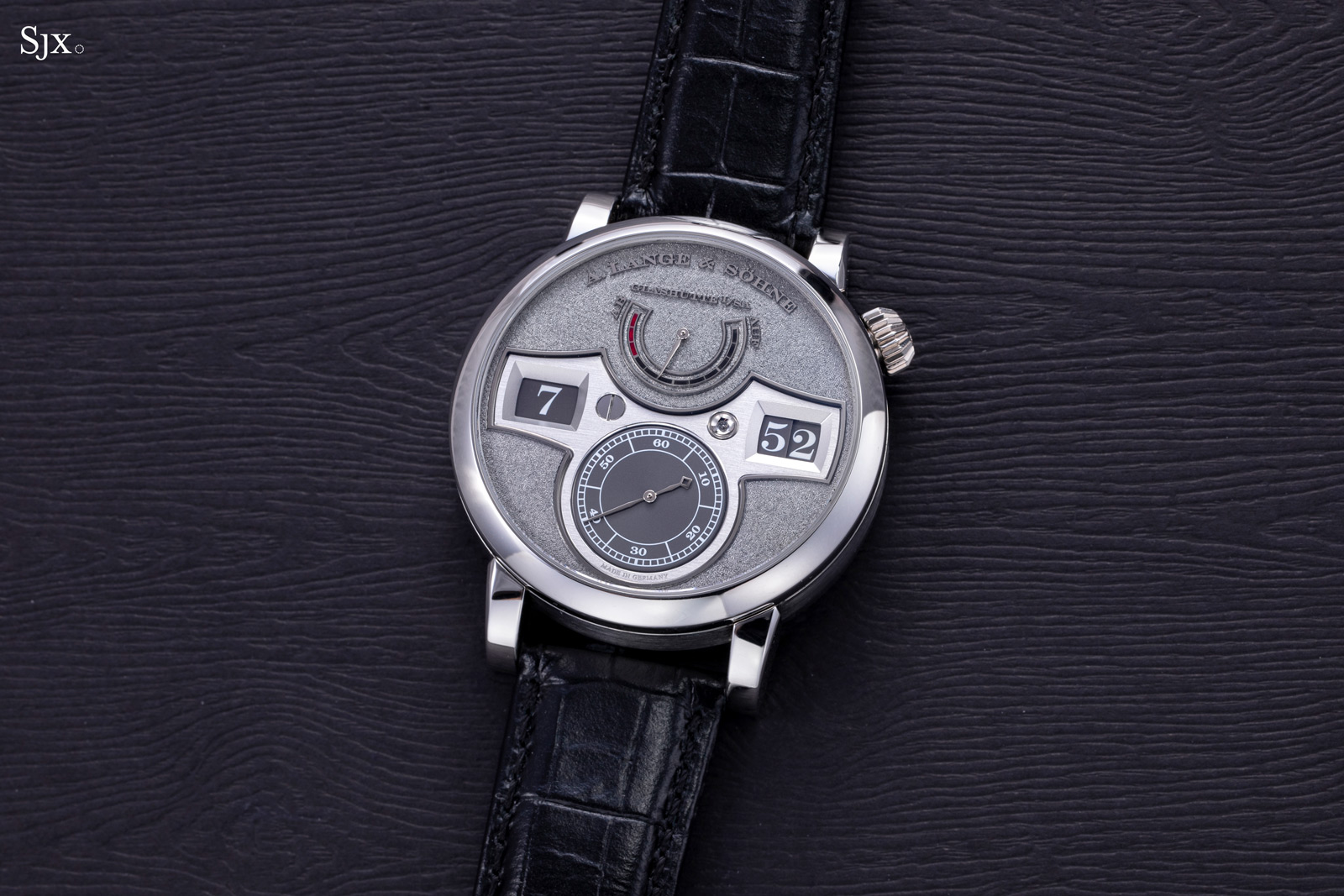
2013 – Lange 1 Tourbillon Perpetual Calendar Handwerkskunst (ref. 140.048)
Interesting because it is both low-key and extravagant, the Lange 1 Tourbillon Perpetual Calendar Handwerkskunst is one of rarest Handwerkskunst models, having been an edition of just 15 pieces.
In fact, it is possibly the aesthetically extravagant member of the Handwerskunst family to date, because the dial is entirely engraved with a floral motif, decor typically reserved for smaller components such as the balance cock.
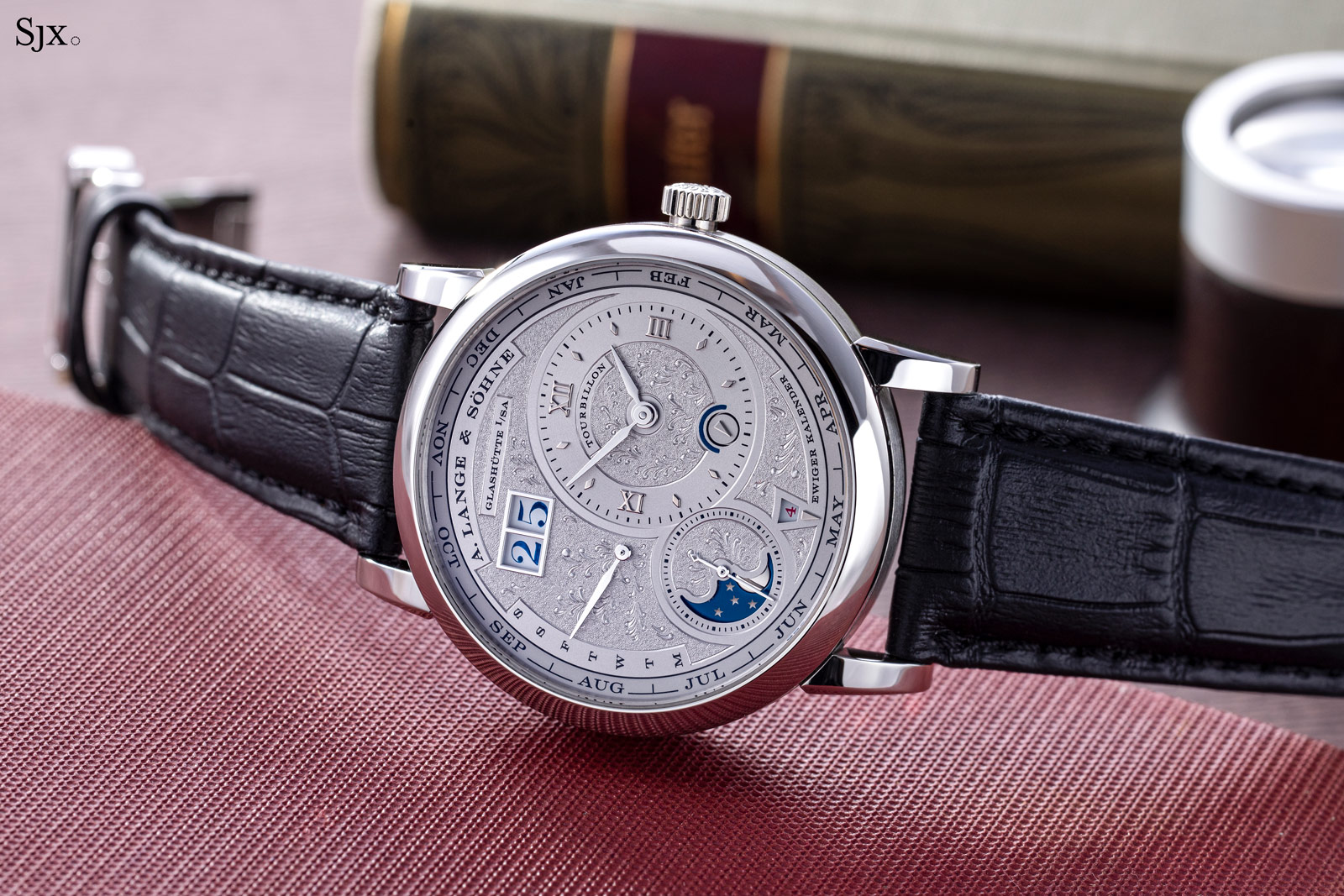
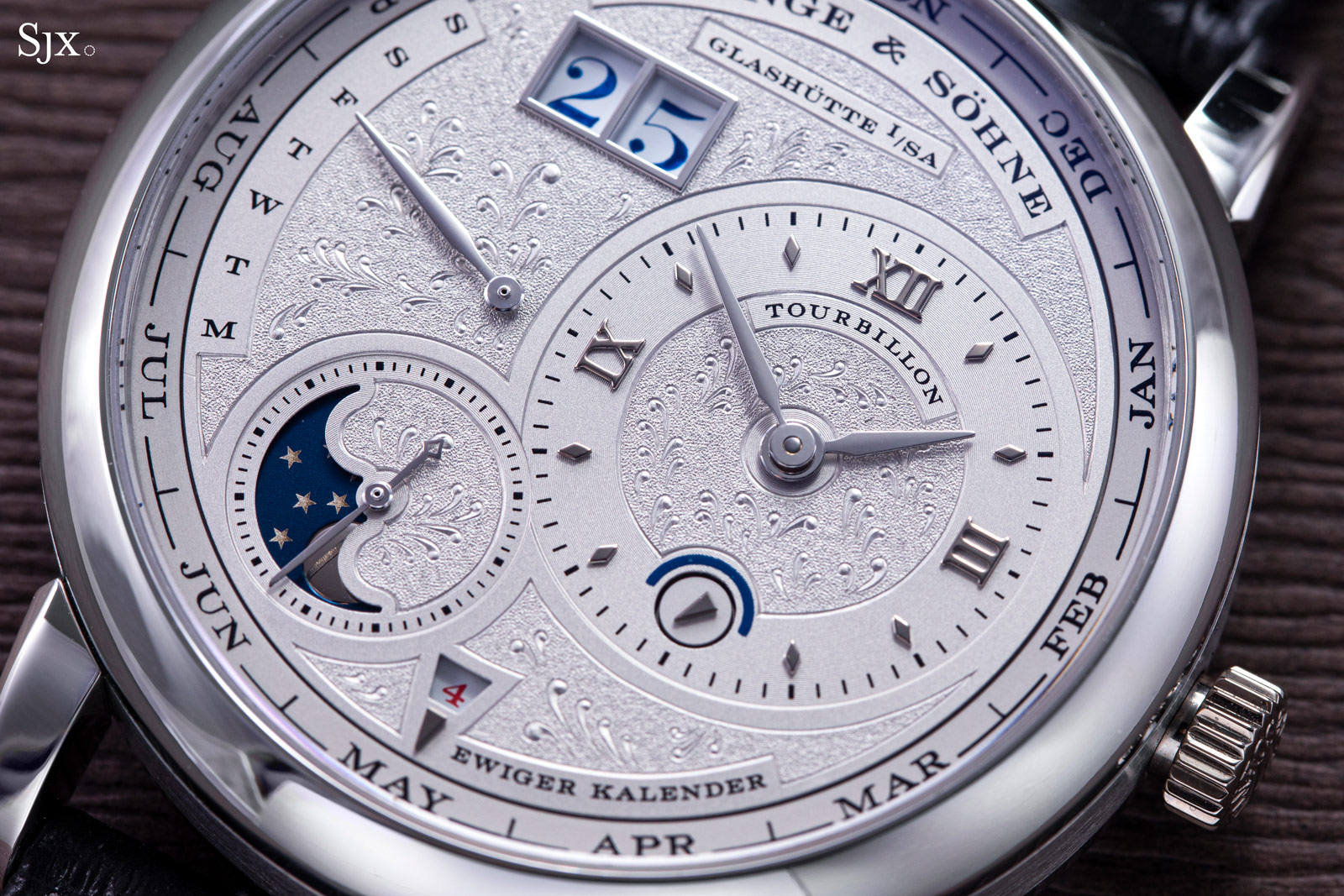
But the floral pattern is only visible up close, which leaves this Handwerkskunst edition quite stealthy – the silvery dial even allows it to pass for the standard model at a distance.
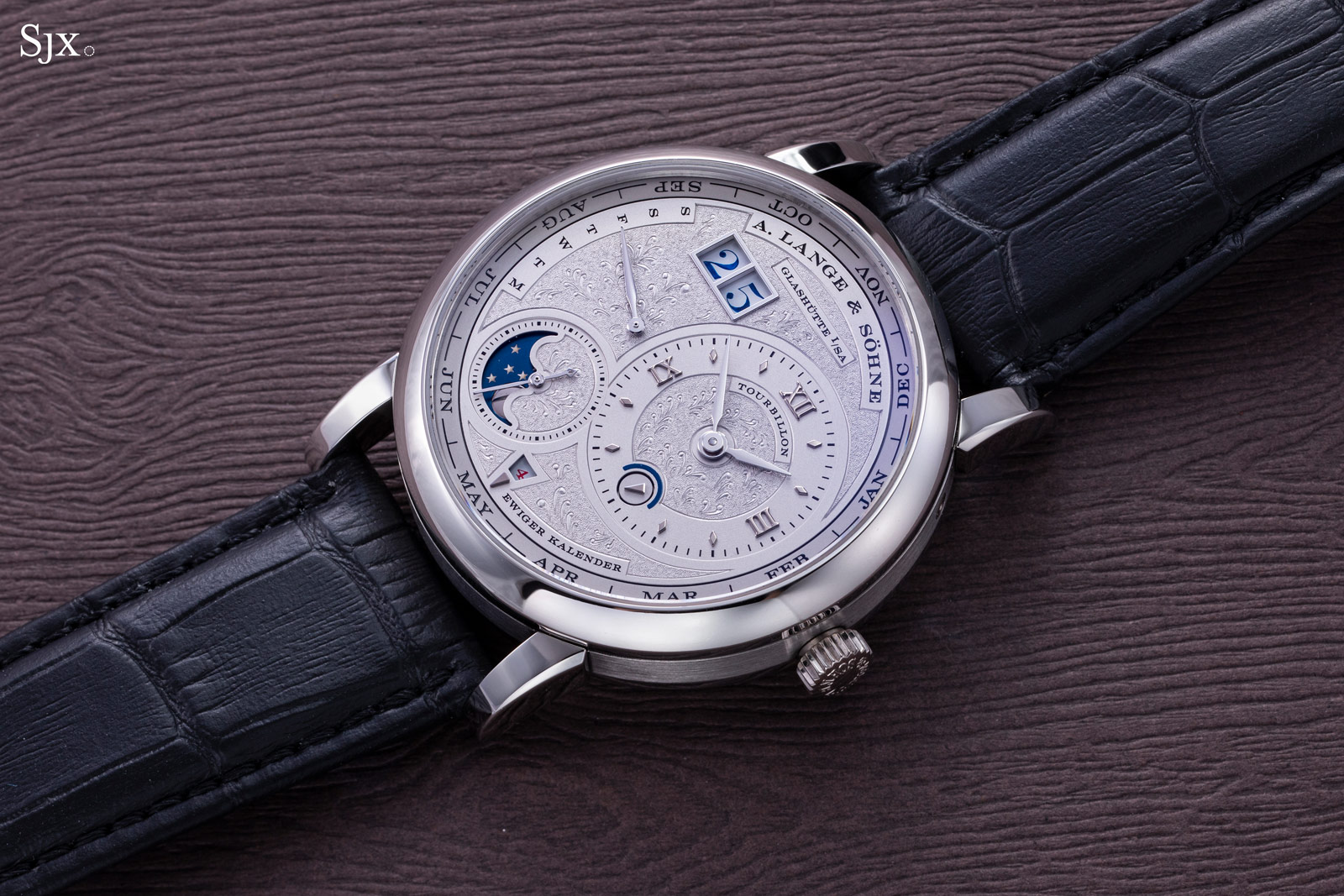
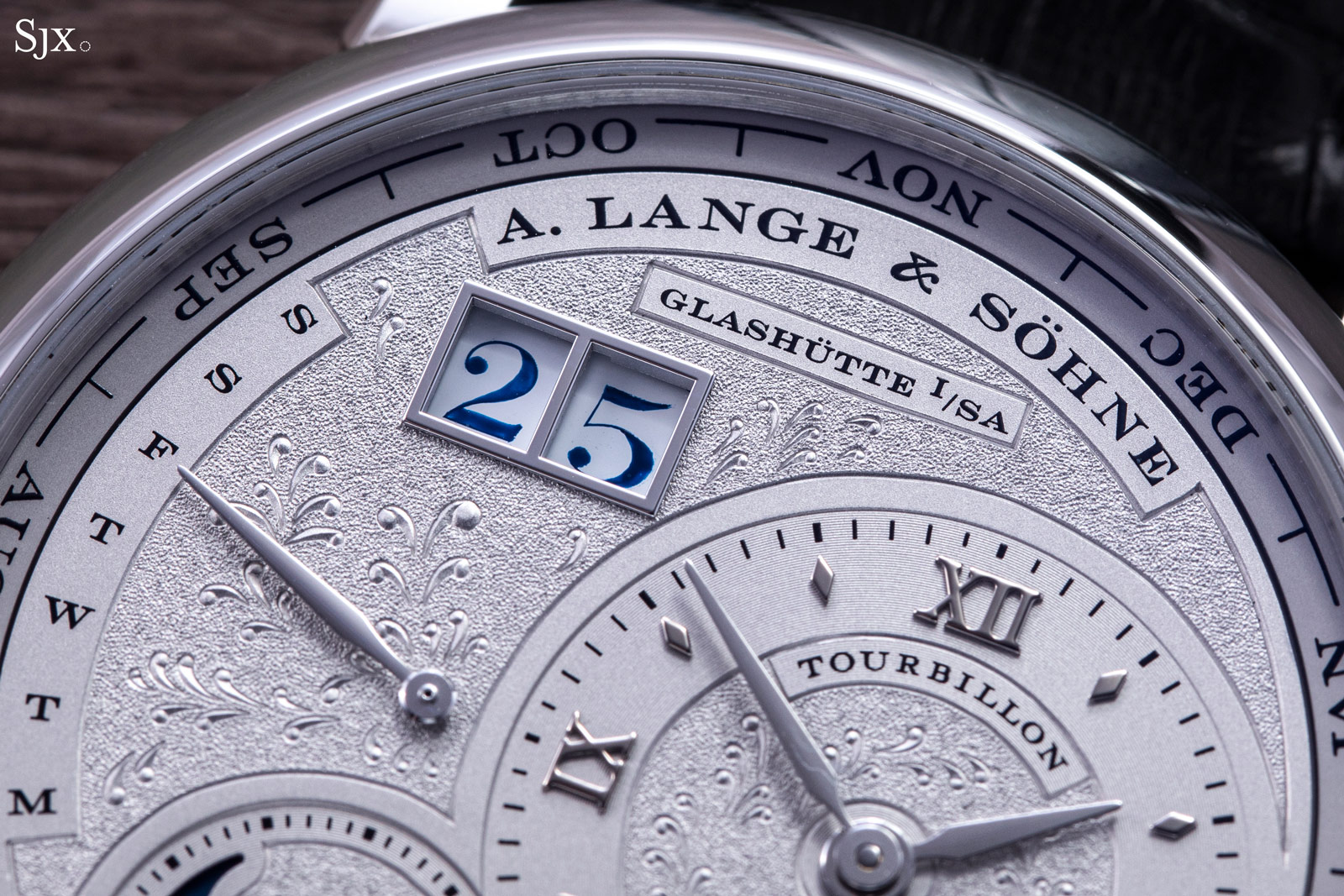
Even the date gets a little extra colour – the numerals are hand-painted in blue
The movement is technically identical to the standard version, as is typical for most Handwerkskunst models, but the L082.1 is fairly complicated to begin with – it has a perpetual calendar that’s integrated instead of modular, and also a tourbillon regulator that’s visible only on the back.
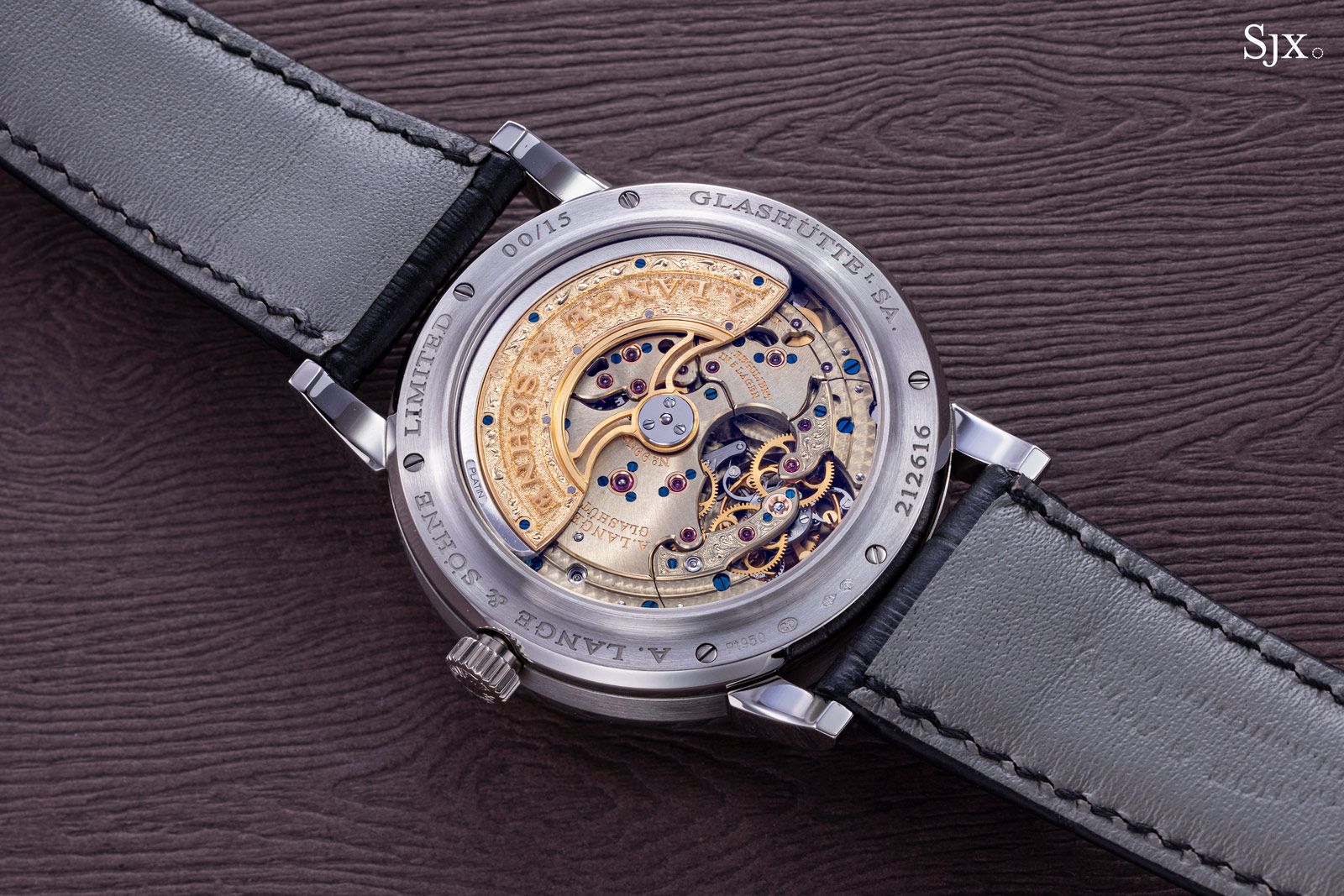
The three-quarter plate has a sunburst graining
But the L082.1 has been is revamped in aesthetic terms, including with a heavily decorative gold rotor. The rest of the movement also gets a slightly different treatment, such as the the solarisation on the three quarter plate that replaces the usual Glashütte stripes.
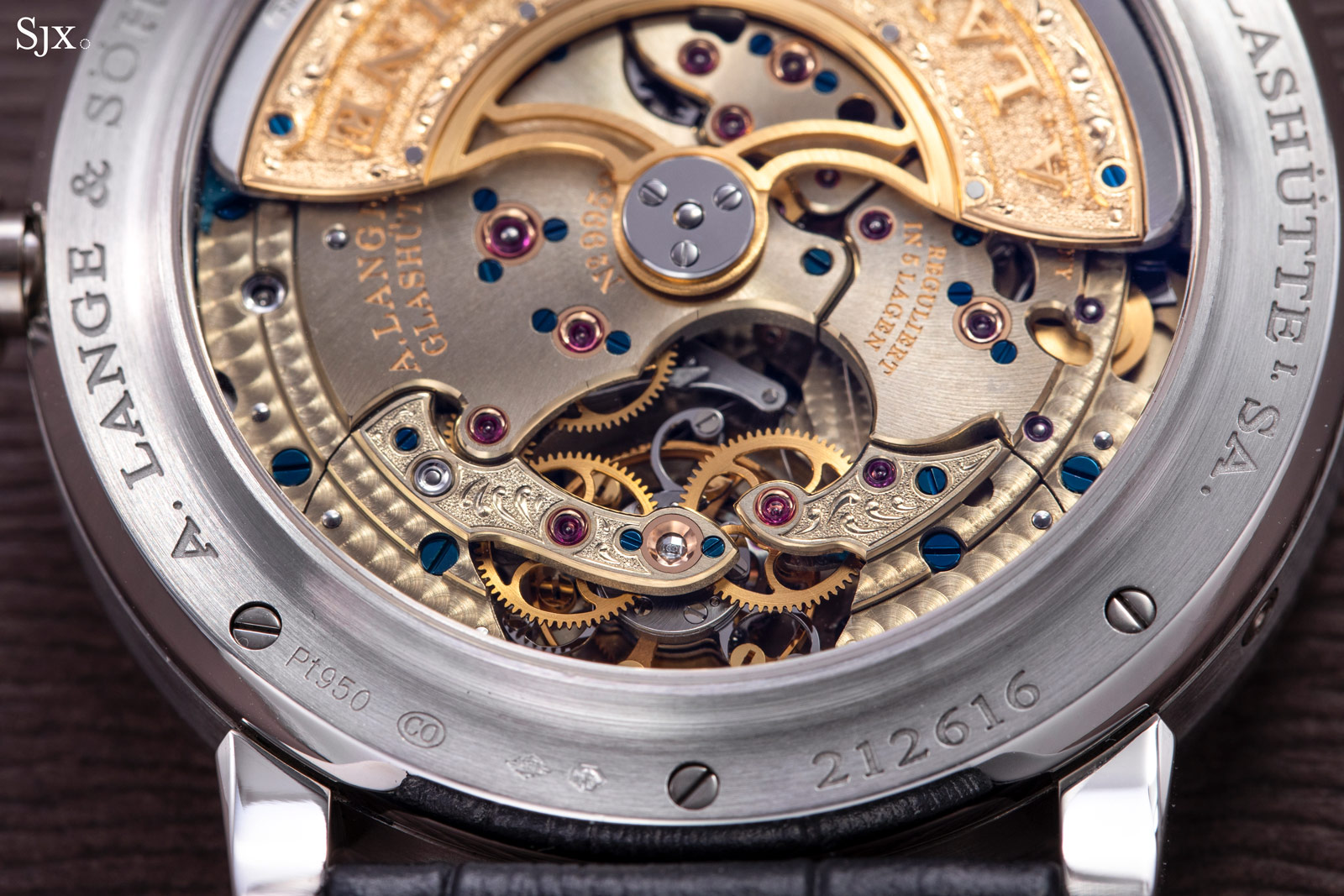
The cocks are engraved with a motif that’s not found on the standard versions, leaves against a tremblage finish
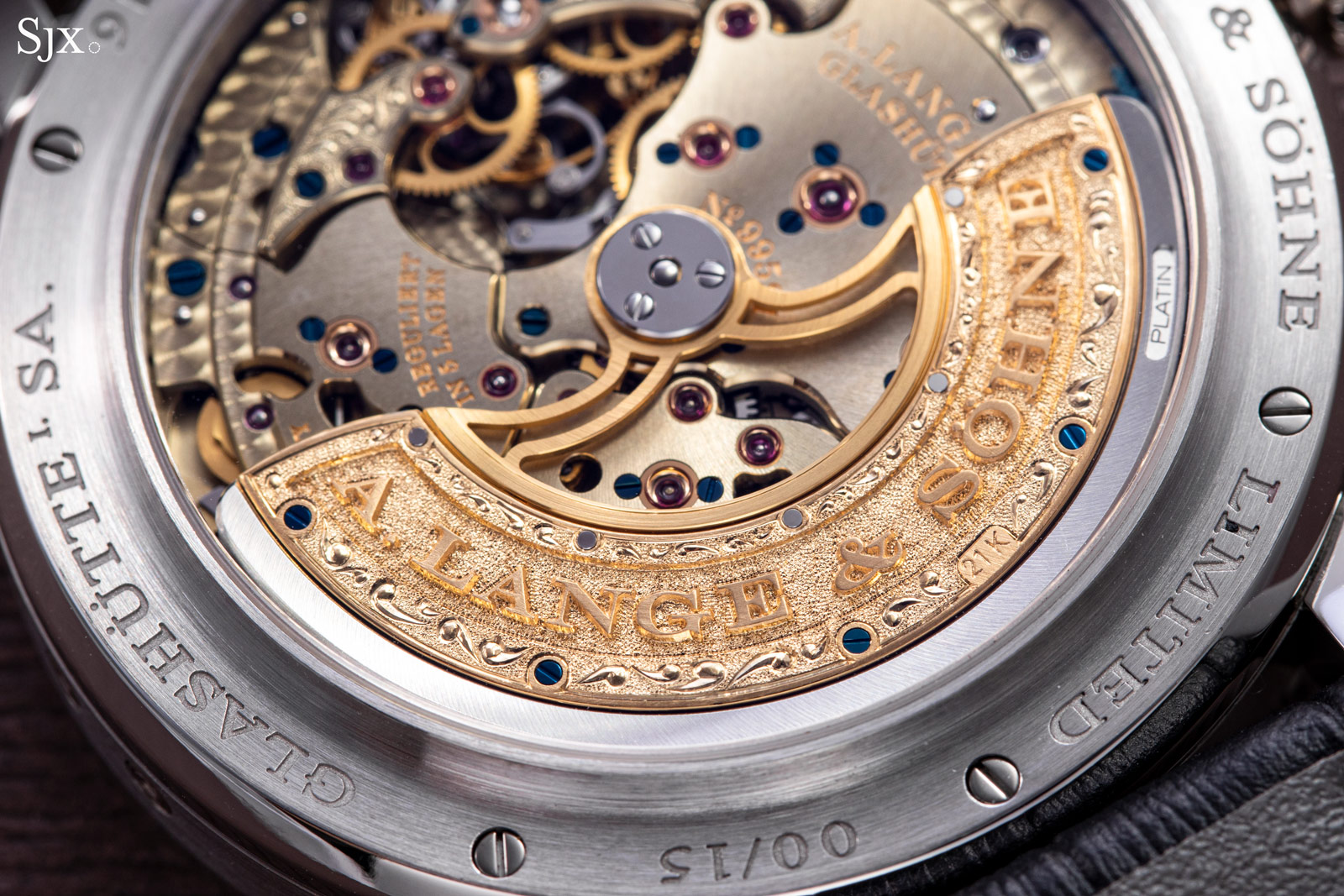
The brand name is framed by leaves and tremblage
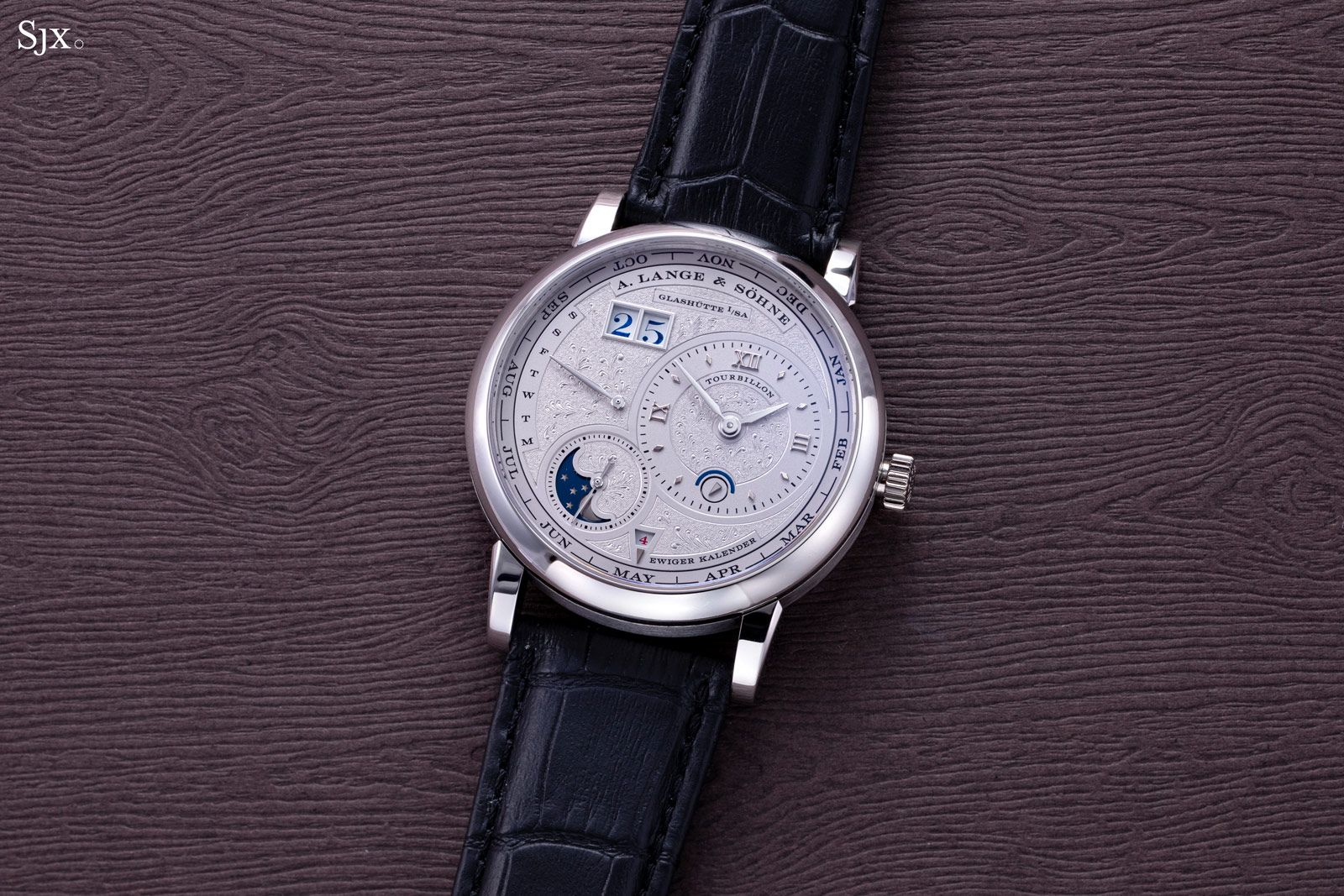
2014 – Lange 1 Tourbillon Handwerkskunst (ref. 704.048)
The subsequent Handwerkskunst edition was yet another Lange 1, and once again with a tourbillon, but fortunately one that was entirely different, in terms of decoration, complication, and tactile feel.
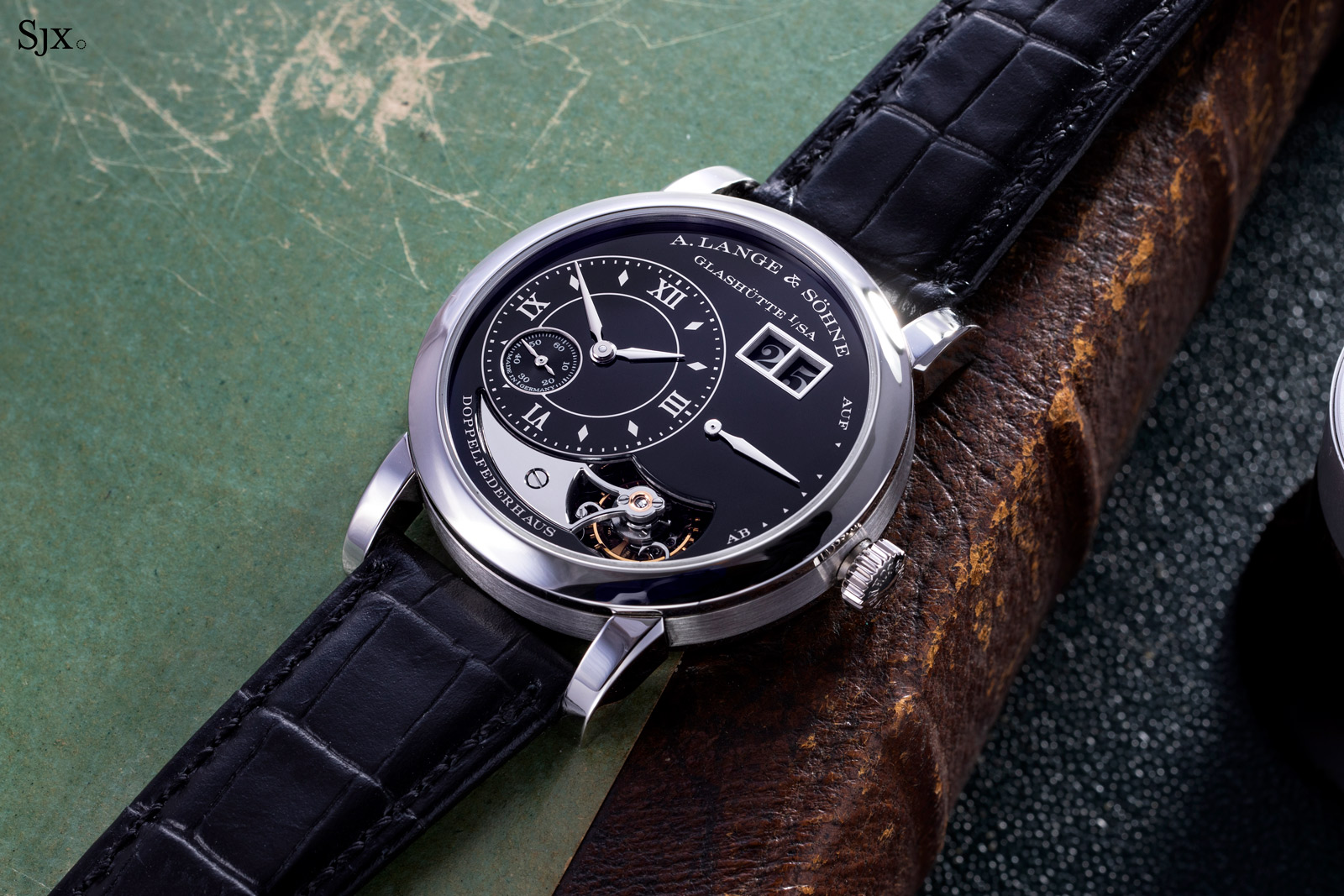
With a monochromatic dial that sports minimal engraving, the Lange 1 Tourbillon Handwerkskunst is the most subtle models in the series to date. The dial is a glossy black, because it is fired enamel – a finished rarely used by Lange. In fact, this is one of only two – and also the first – Lange models with a black enamel dial, the other being the one-off 1815 Homage to Walter Lange in steel, which sold for a whopping US$852,000 three years ago.
But as is typical of the Handwerkskunst, the dial is also engraved, albeit in a less-than-obvious manner. The dial disc is first carved out to create the indices and texts in relief before being covered with a layer of enamel and then fired, a technique known as champlevé. It is then polished to leave the relief markings flush with the enamel.
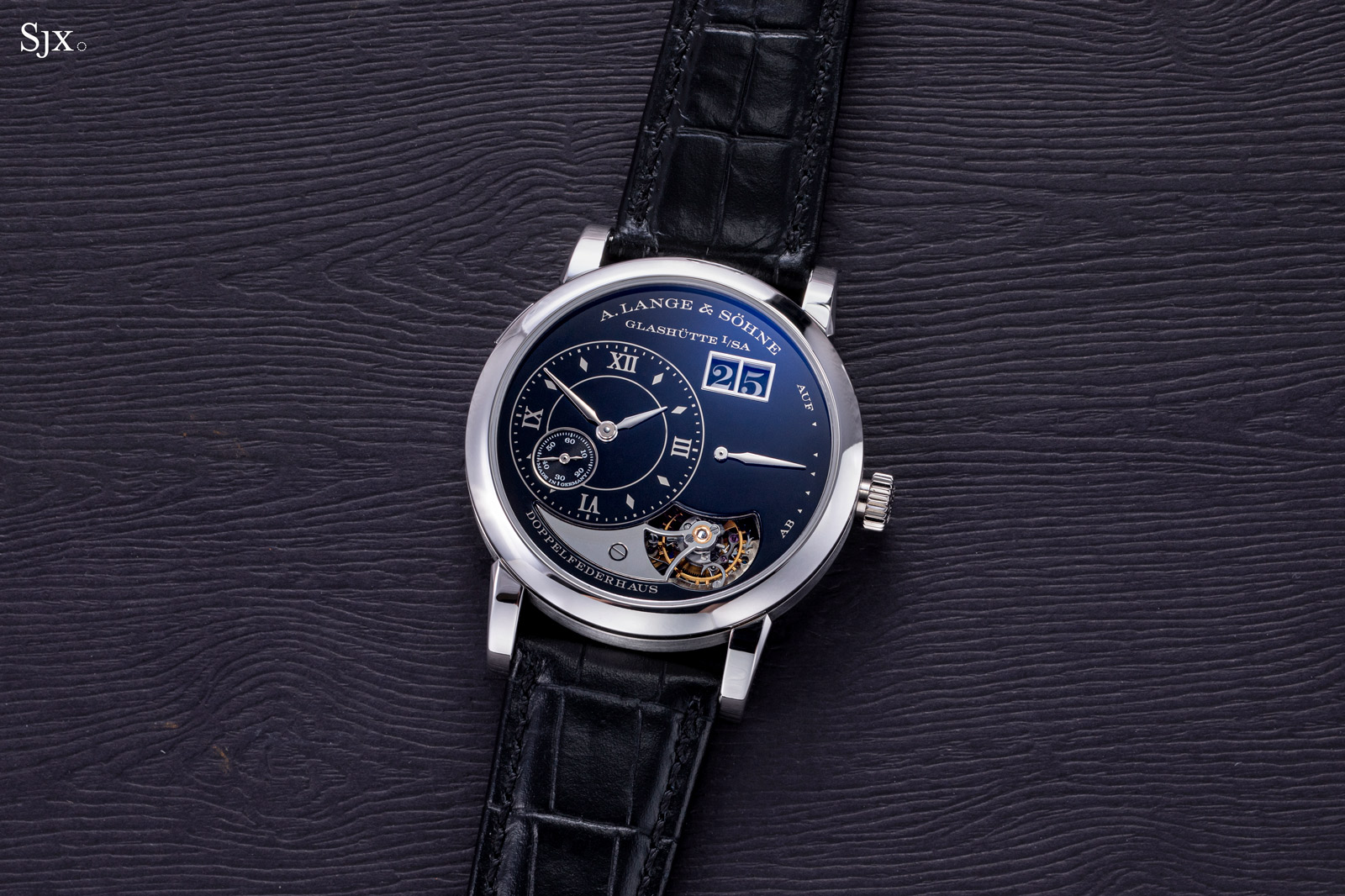
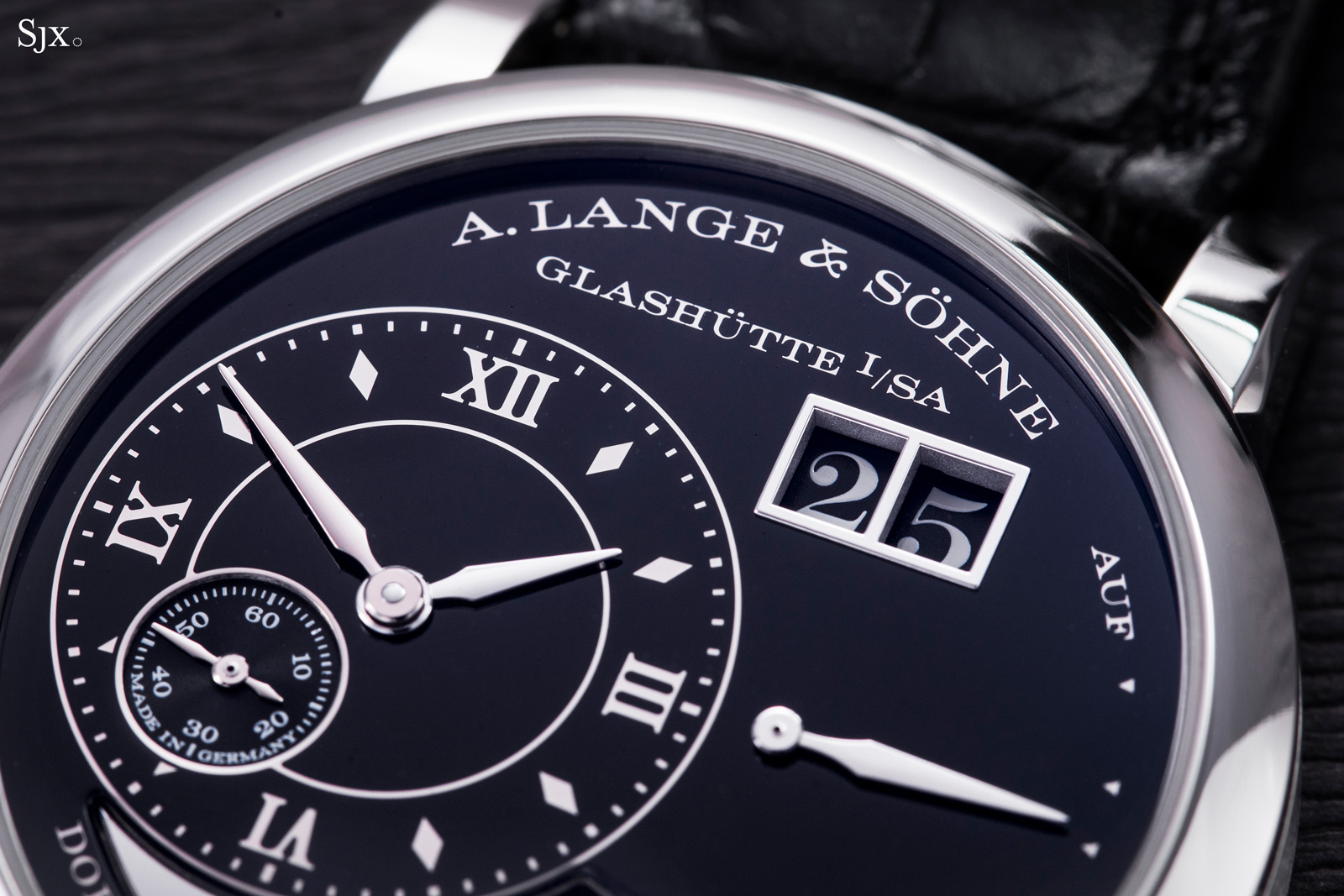
Forgoing tremblage and floral engraving found on most other Handwerkskunst, the dial is striking in its simplicity. The enamel gives it a deep, almost viscous appearance, a stark look that goes well with Lange’s case design.
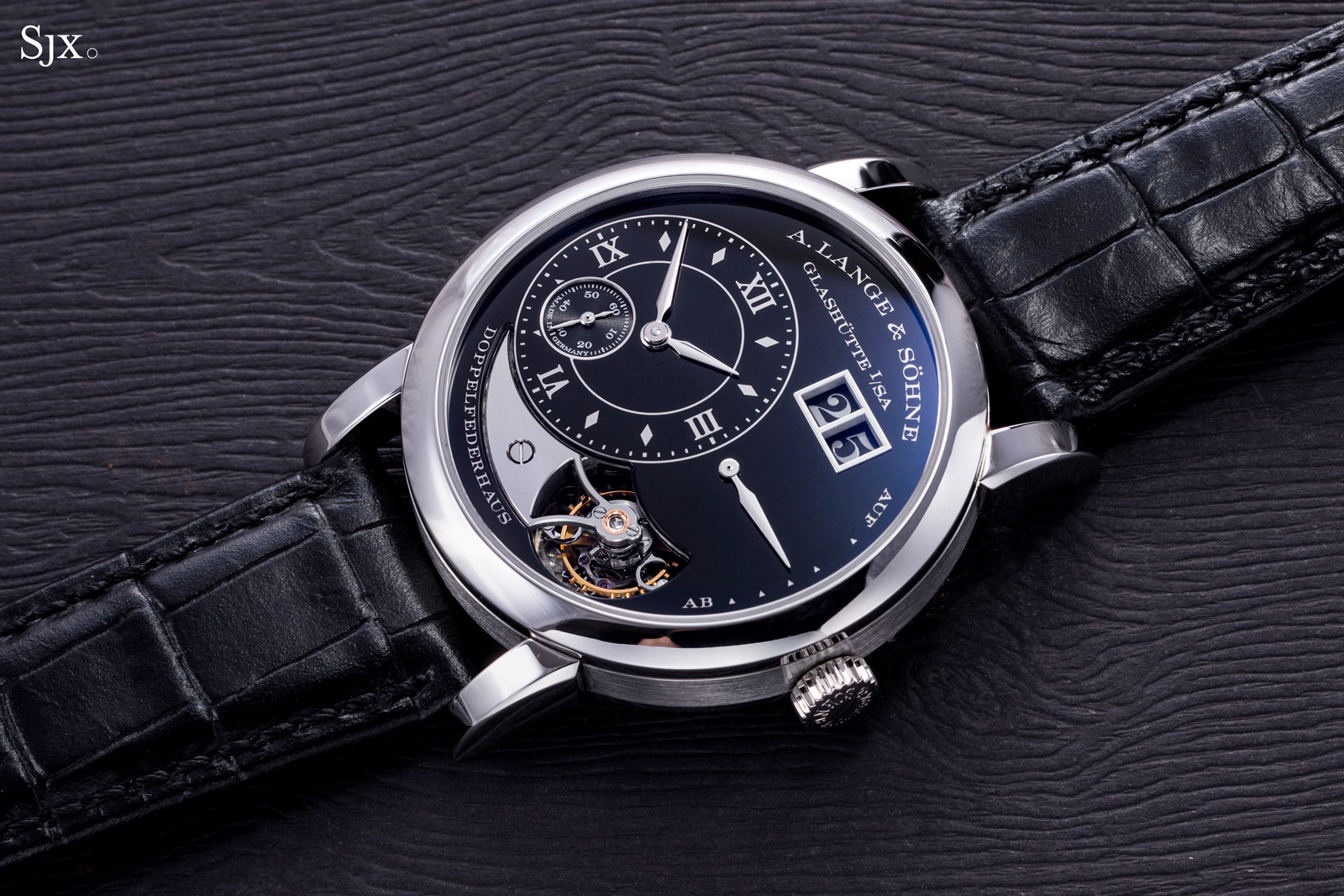
At a glance, the L961.3 might seem identical to the L961.1 found in the standard version, but it is certainly not.
For one, the tourbillon regulator incorporates with a stop-seconds mechanism, a major upgrade that arrived 14 years after the original L961.1 was introduced as the hacking-tourbillon was only invented much later, having debuted in the Cabaret Tourbillon in 2008.
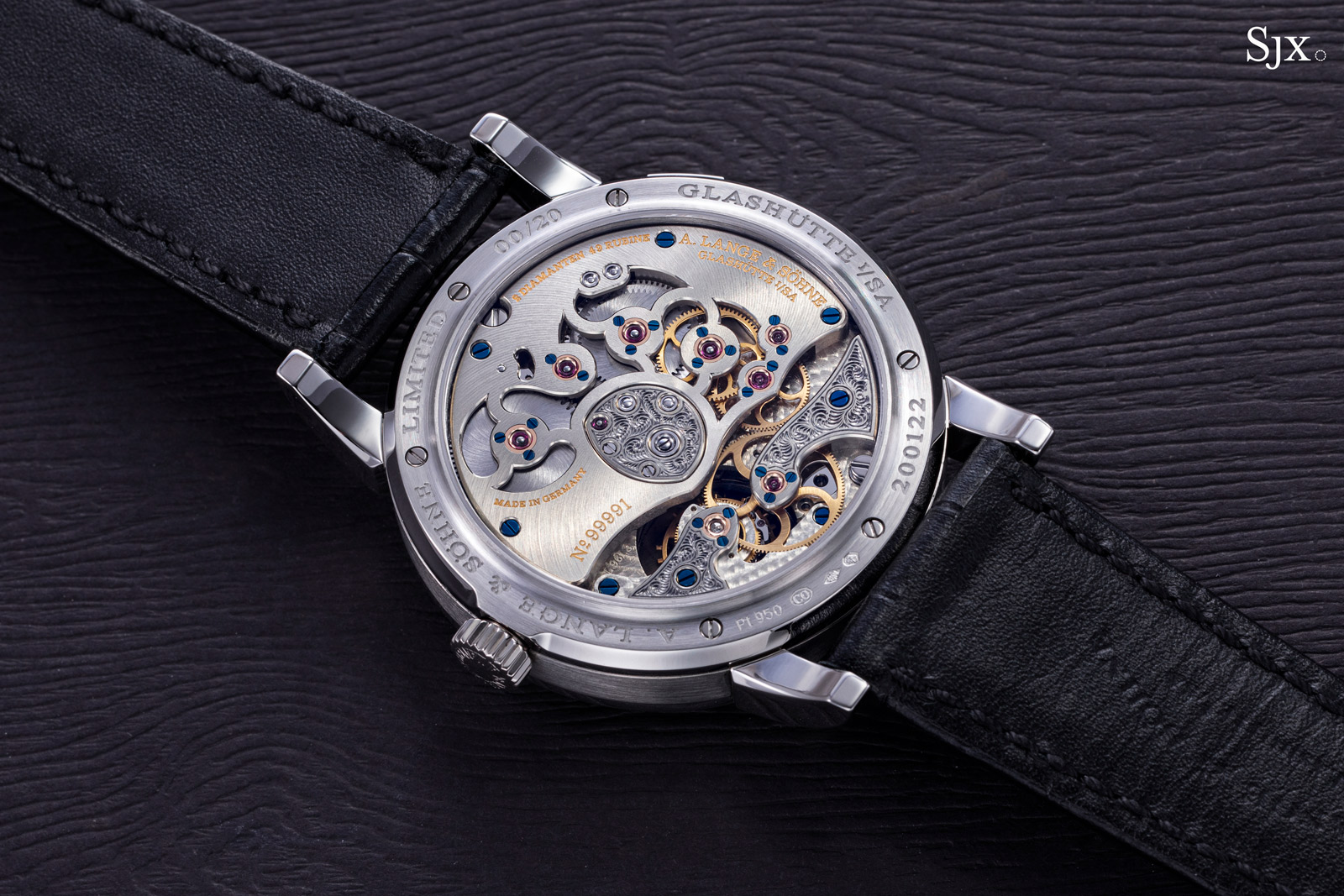
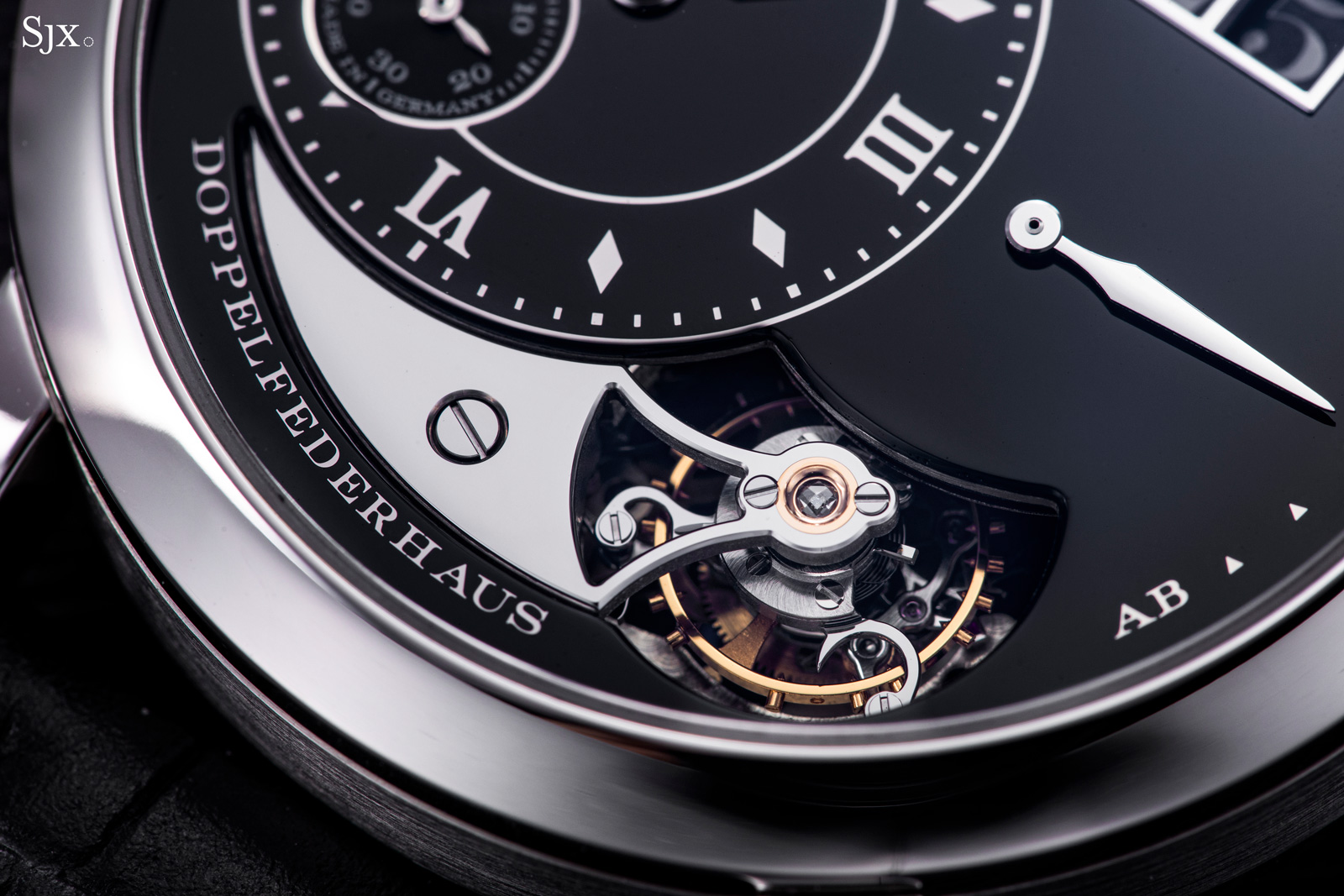
And the movement is quite different stylistically, as the three-quarter plate has been open-worked – creating numerous inward angles along the bevelled edges – while the central, “island” bridge is hand-engraved, as are the twin cocks.
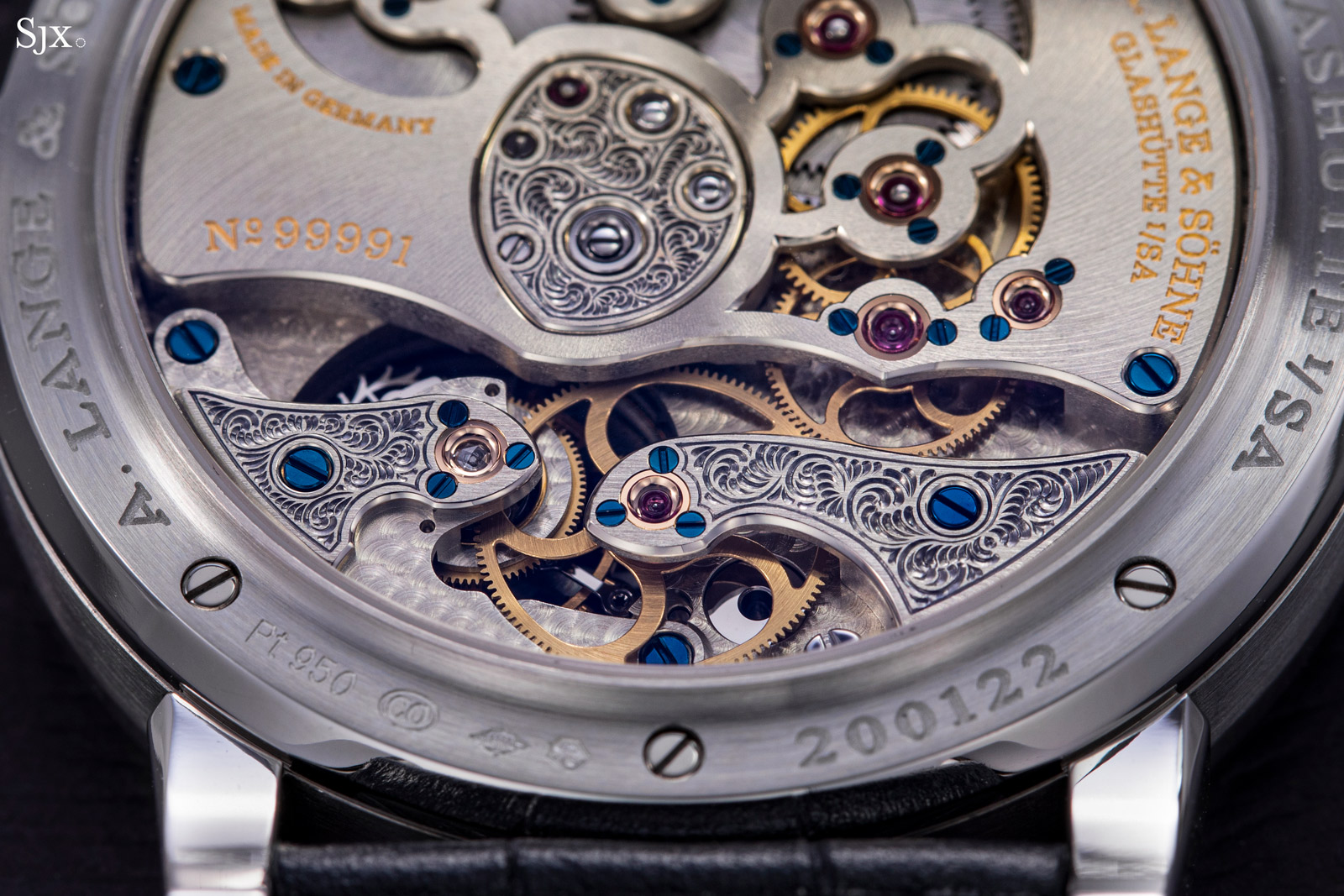
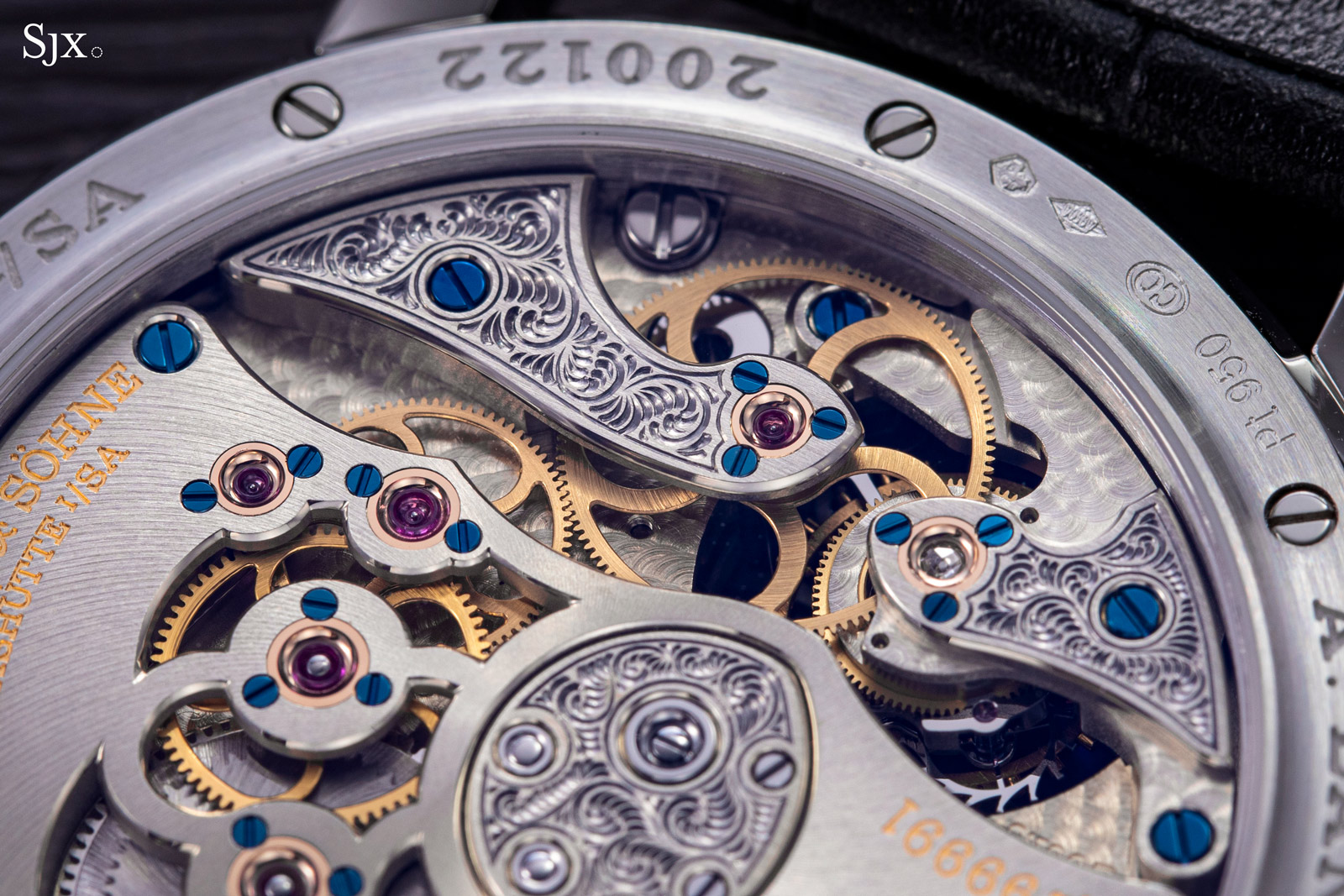
2015 – 1815 Tourbillon Handwerkskunst (ref. 730.048)
While the Handwerkskunst models typically adopt a conservative palette, the 1815 Tourbillon Handwerskunst is flamboyant by Handwerkskunst standards. Arguably the most striking Handwerkskunst edition in terms of style, it combines a dark grey dial with a pink gold case.
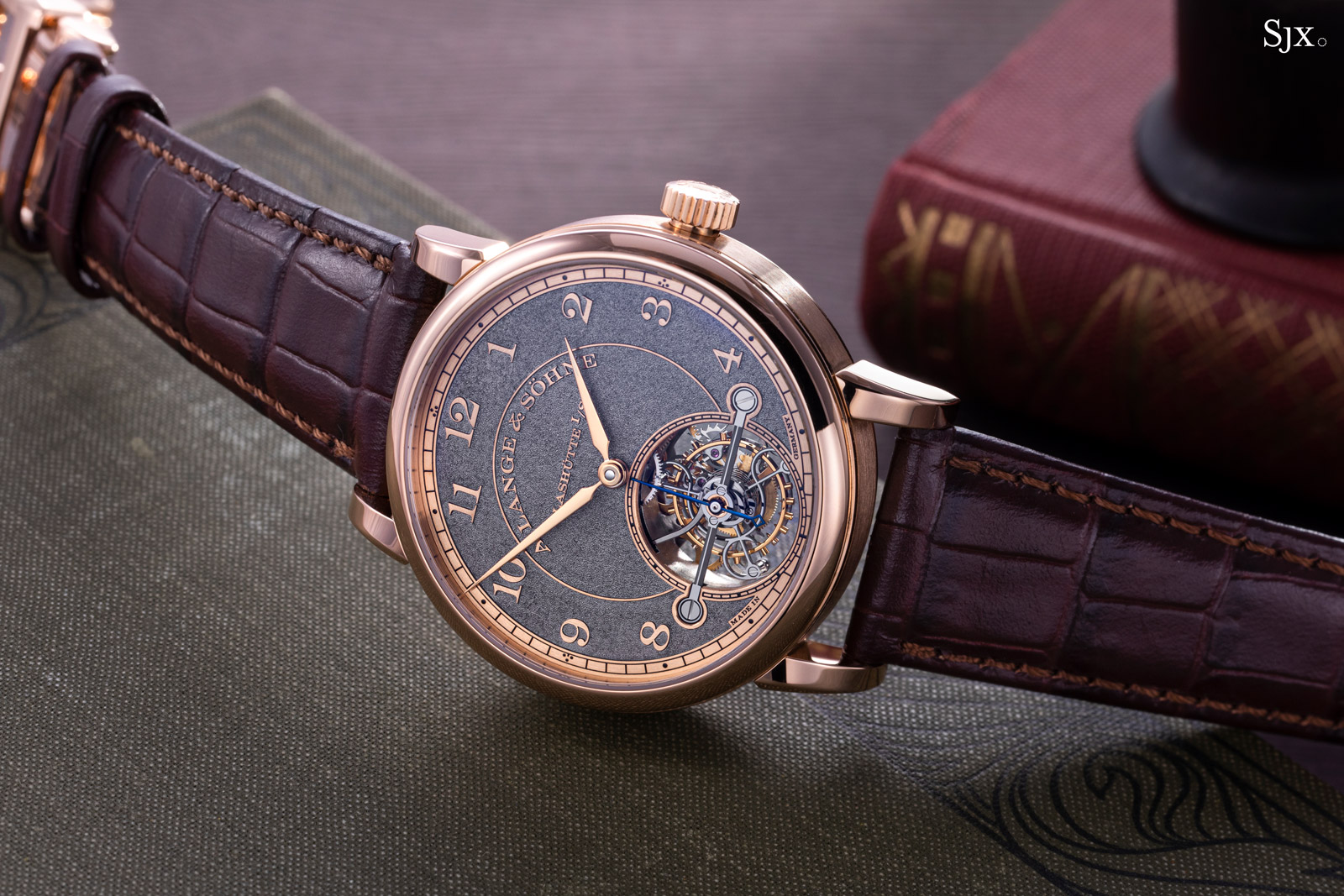
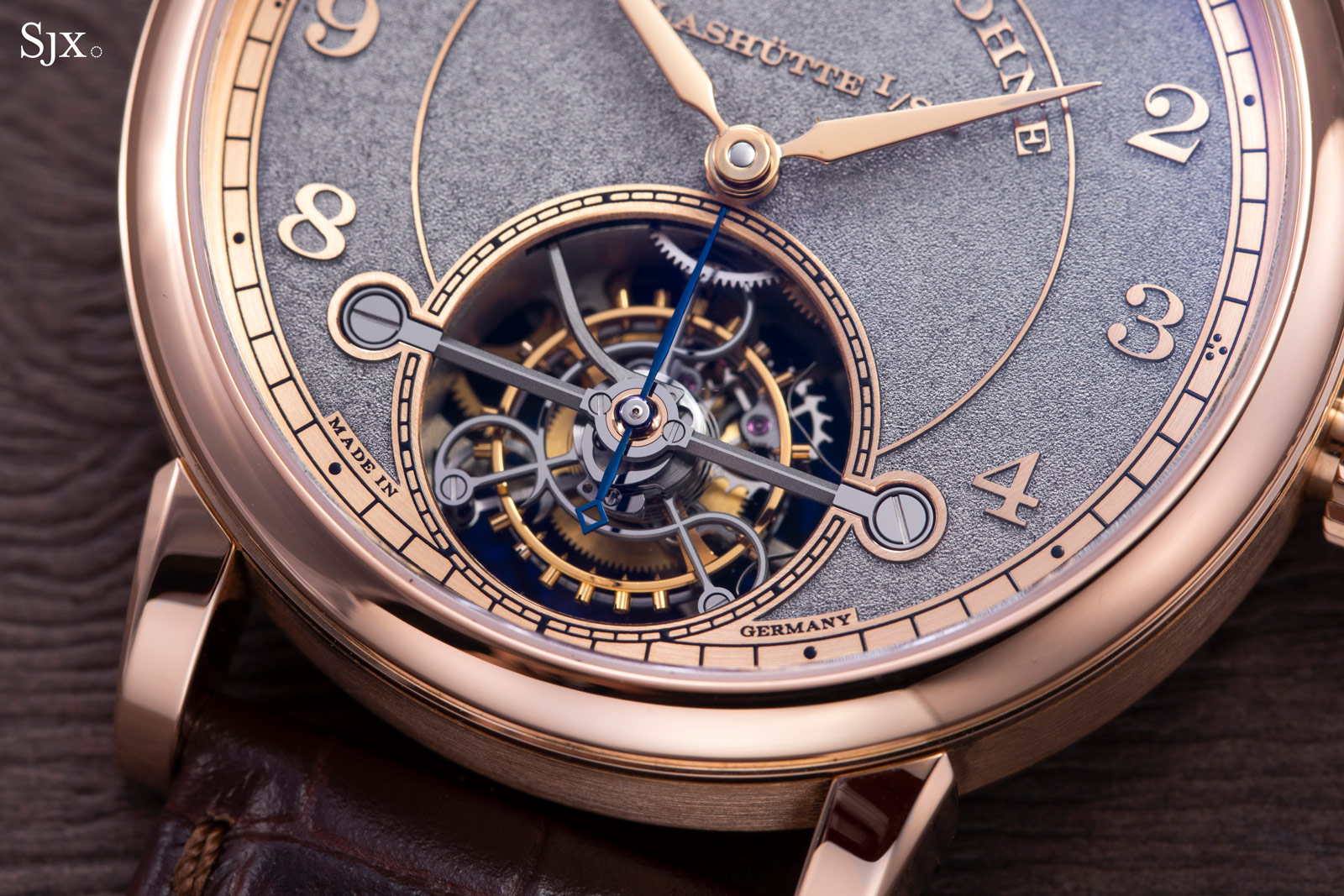
The tourbillon cage is larger than that of the Lange 1 Tourbillon, which allows for a slimmer and more elegant curve for the arms of the carriage
Once again the familiar tremblage finish is found on the dial, along with abundant relief engraving – all of the Arabic numerals are in relief, as is the logo. With only an opening at six o’clock for the tourbillon, the dial is relatively simple and almost symmetrical, so there’s nothing to get in the way of the impressive decor.
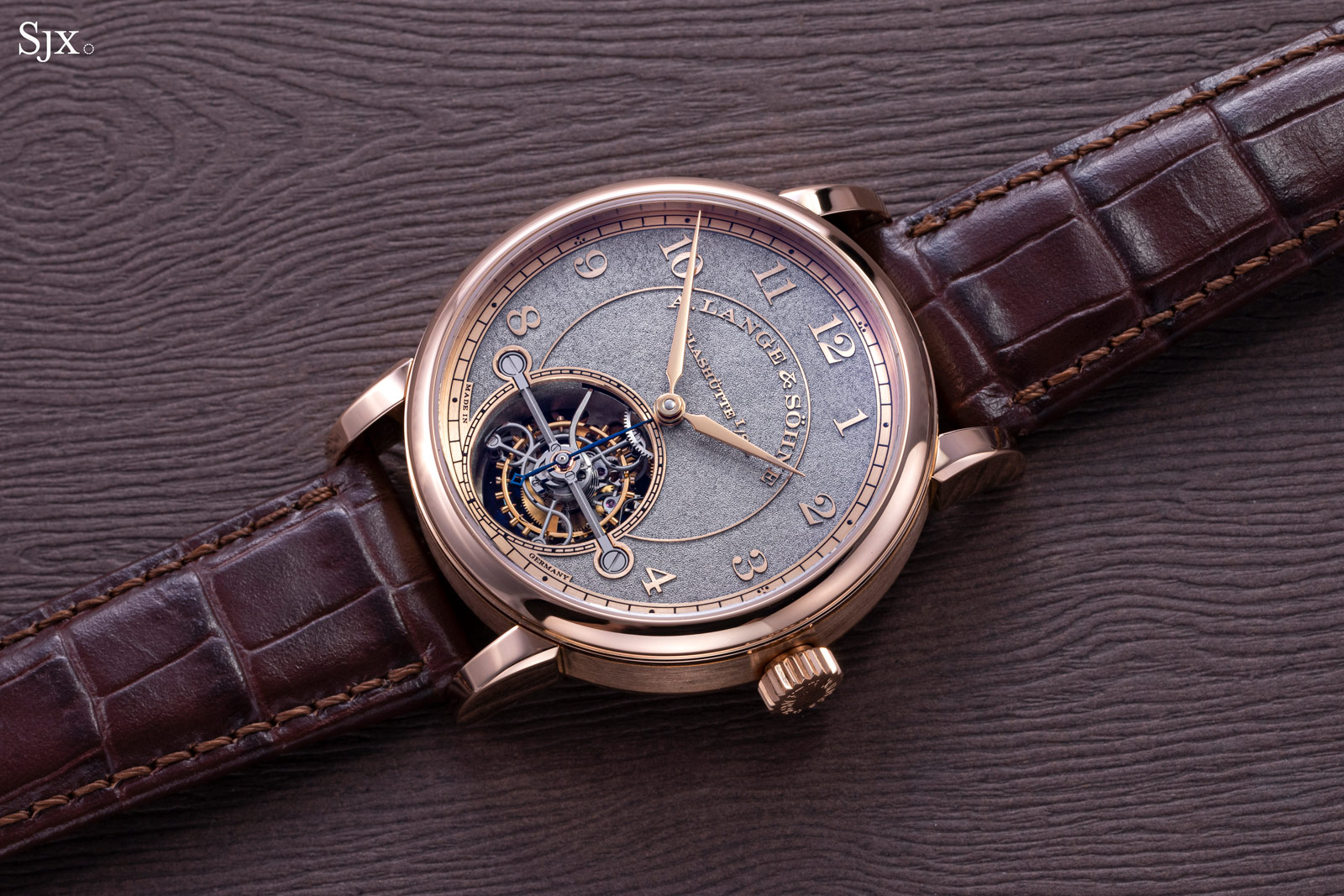
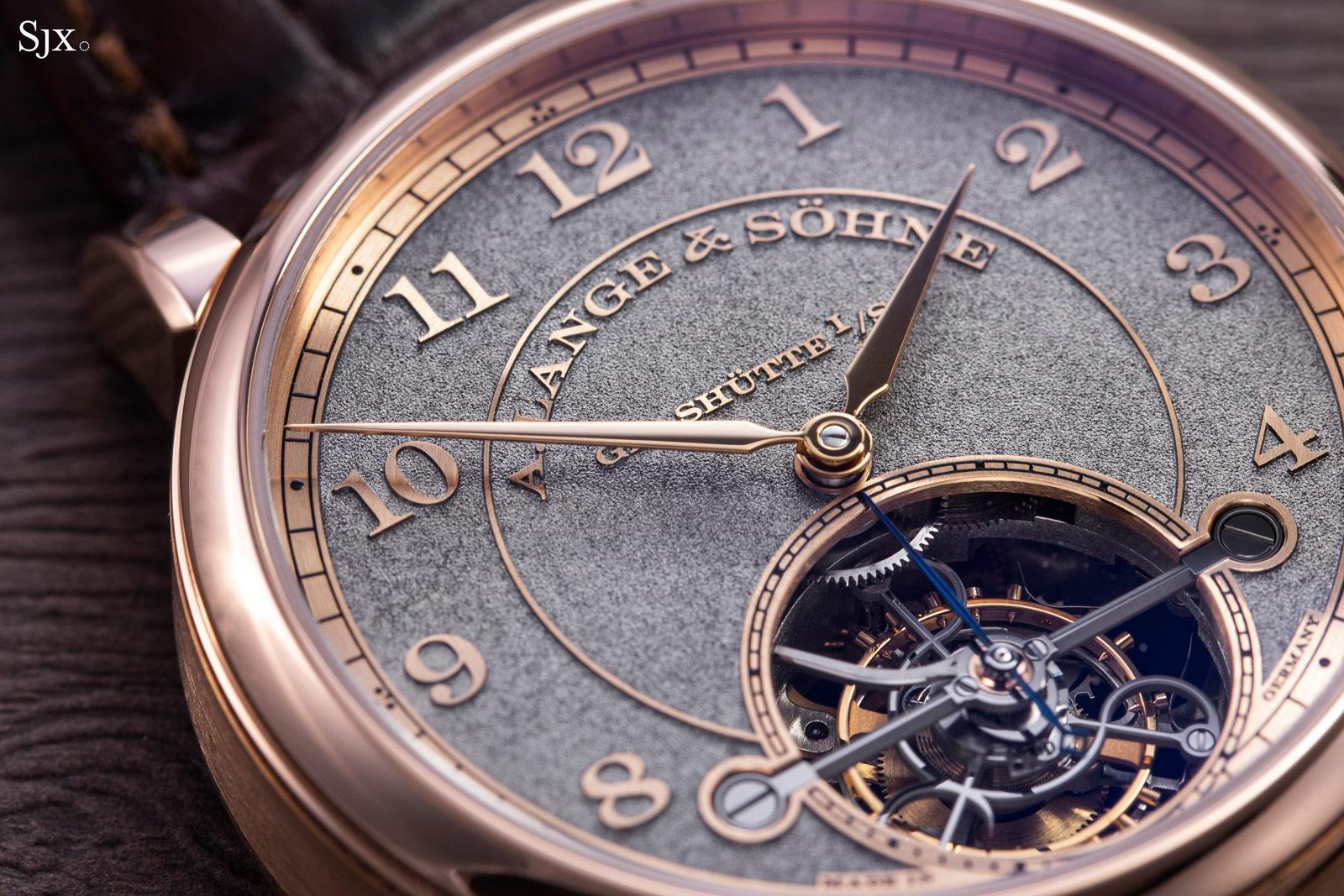
The movement is mechanically identical to the L102.1 found in the standard production model, which was unveiled just a year before the Handwerkskunst version was announced. But as is typical of the Handwerkskunst family, the movement gets special treatment.
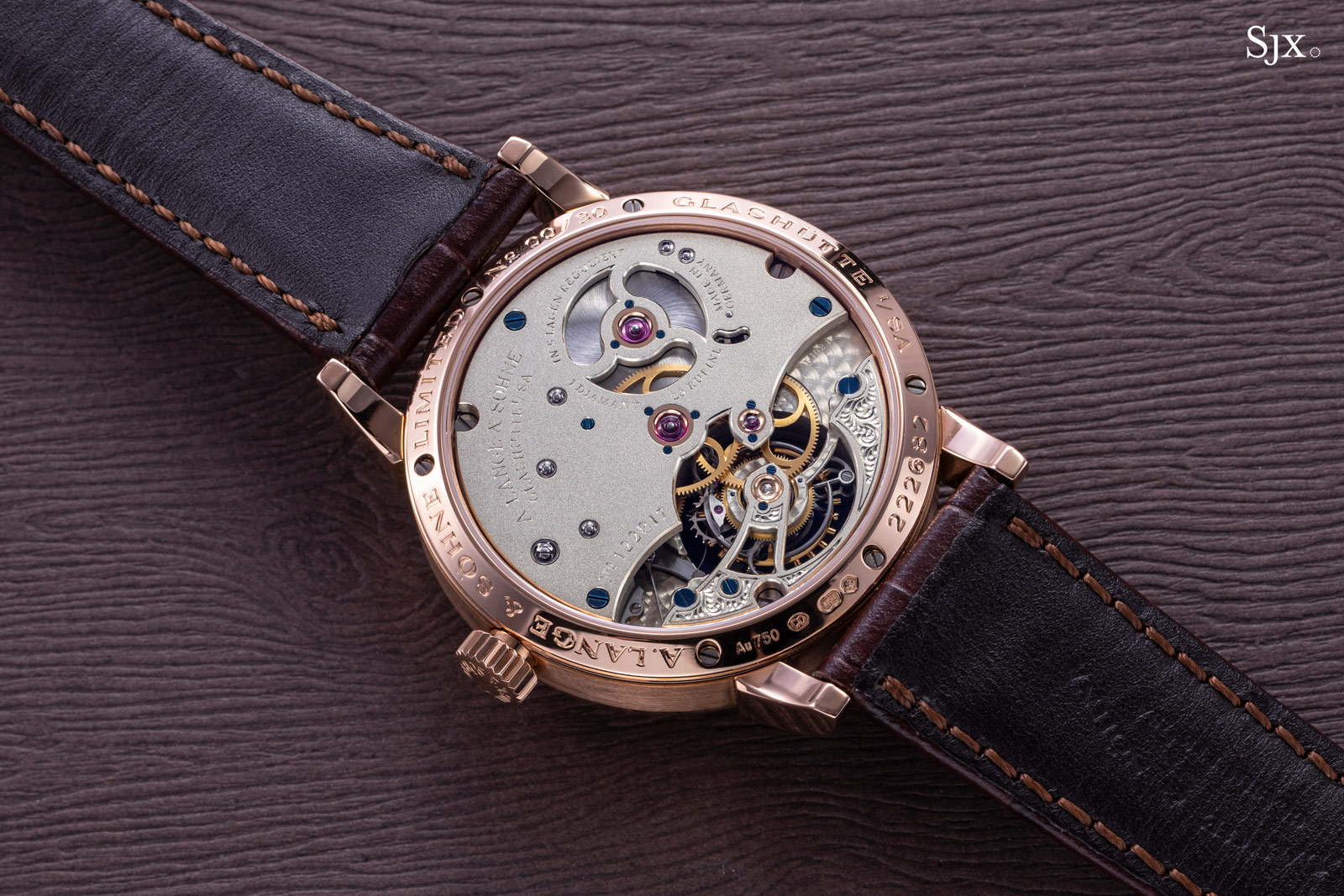
Not only does the three-quarter plate get a fine frosting instead of the usual striping, the outline of the plate has been tweaked to allow for more sensual curves and inward angles. The barrel cover as well as the tourbillon cock have been skeletonised, giving the users a better view into the mechanics.
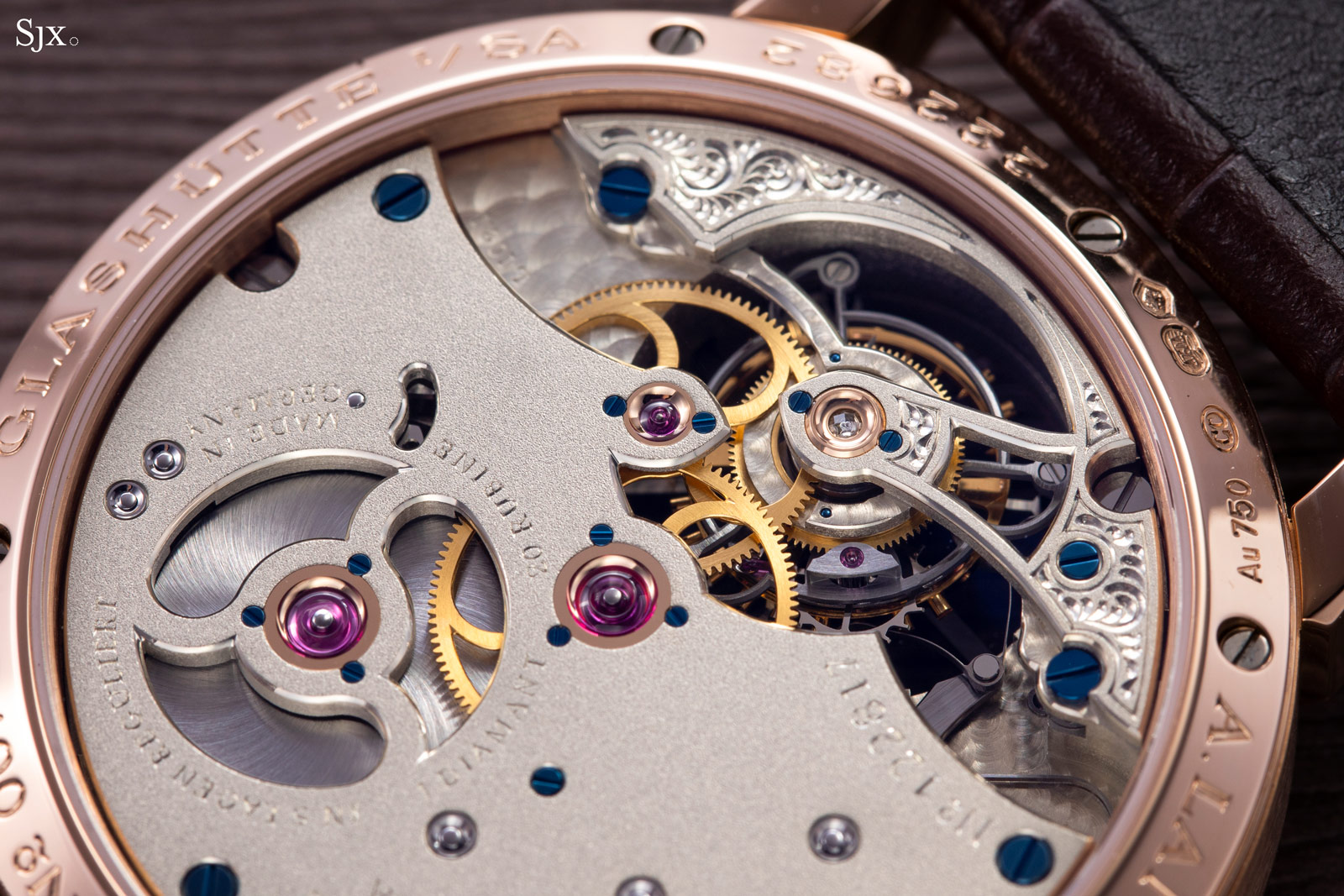
Open-working the tourbillon cock is a shrewd move, as the moving cage is interesting to observe
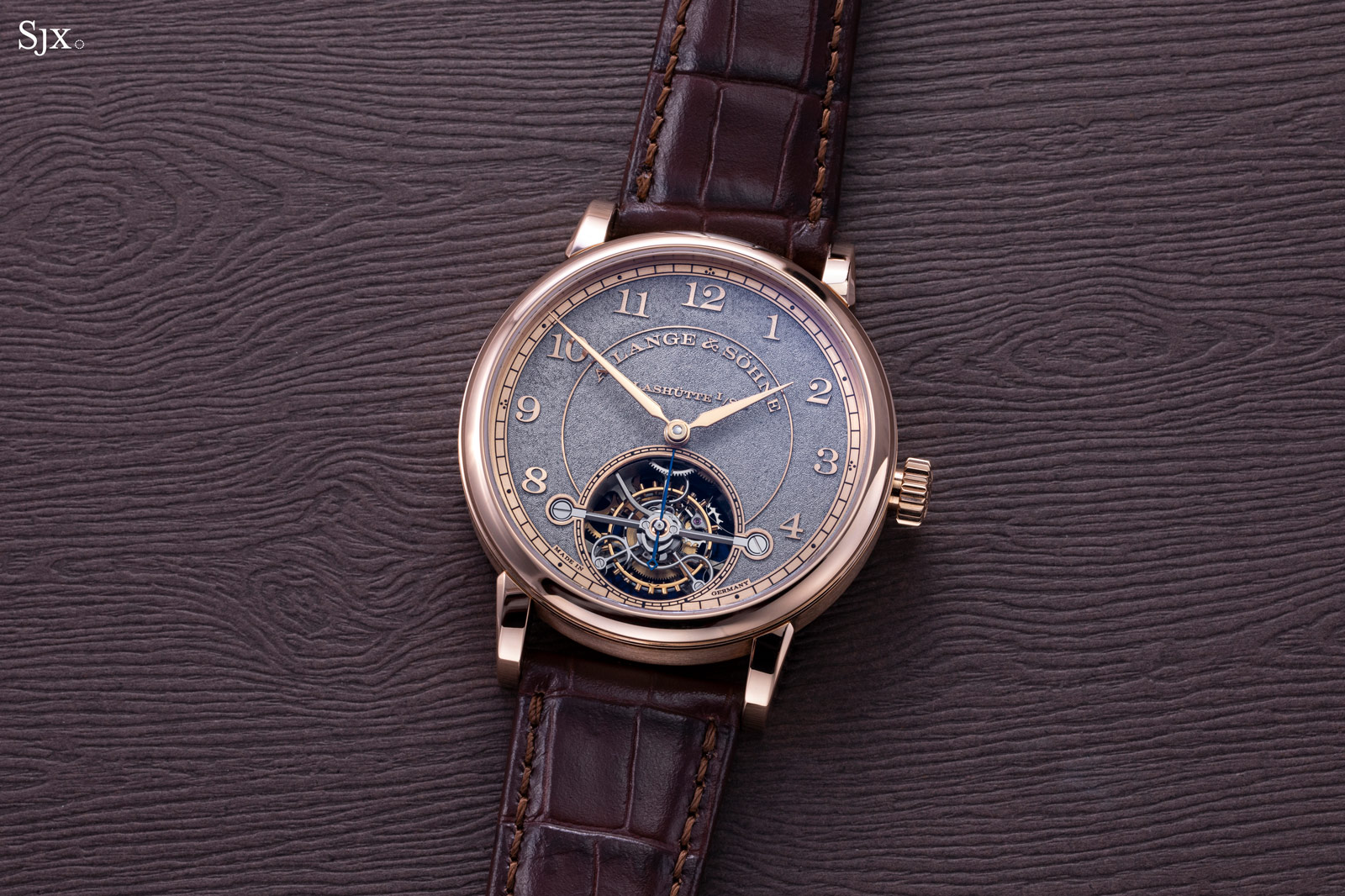
2017 – 1815 Rattrapante Perpetual Calendar Handwerkskunst
Last but not least is the ultimate version of the 1815 Rattrapante Perpetual Calendar Handwerkskunst, which is also the most complicated Handwerkskunst edition, having both a perpetual calendar and split-seconds chronograph.
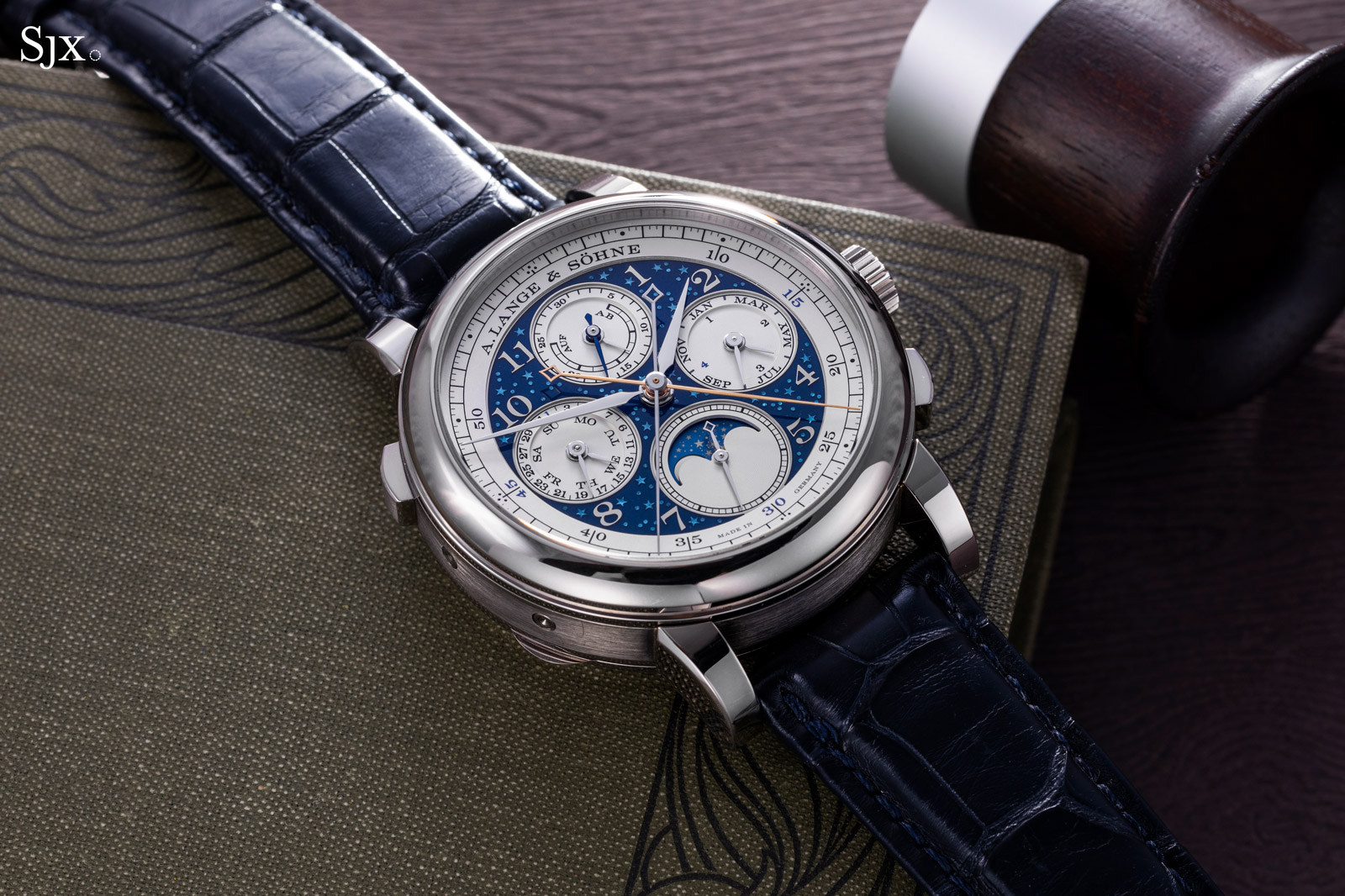
The number of sub-dials and pushers immediately give away the fact that it’s highly complicated
And the decoration doesn’t disappoint, with an intricacy of design and technique that live up the complex mechanics. The dial, for instance, is first engraved in relief and then enamelled, combining two techniques that are mostly found singularly in Handwerkskunst models (except for the Lange 1 Tourbillon Handwerkskunst, which has far simpler engraving).
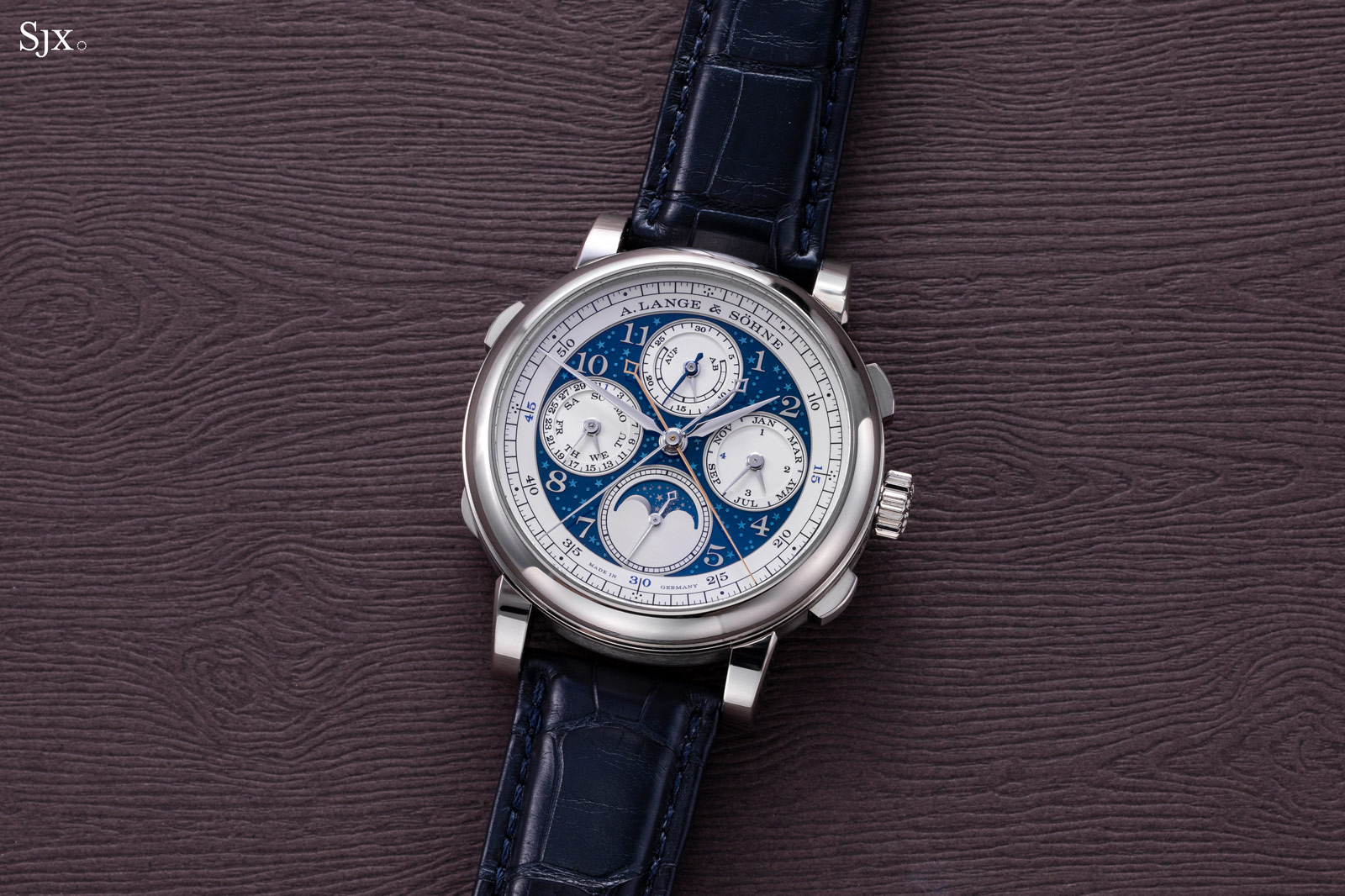
The engraving departs from Handwerkskunst models as it is thematic – a cosmic motif with tiny stars against a dark blue expanse. Interesting as it is, the stars on the dial are largish – several times the size of those on the moon phase disc – resulting in a look that’s stylised, whimsical, and unconventional for Lange.
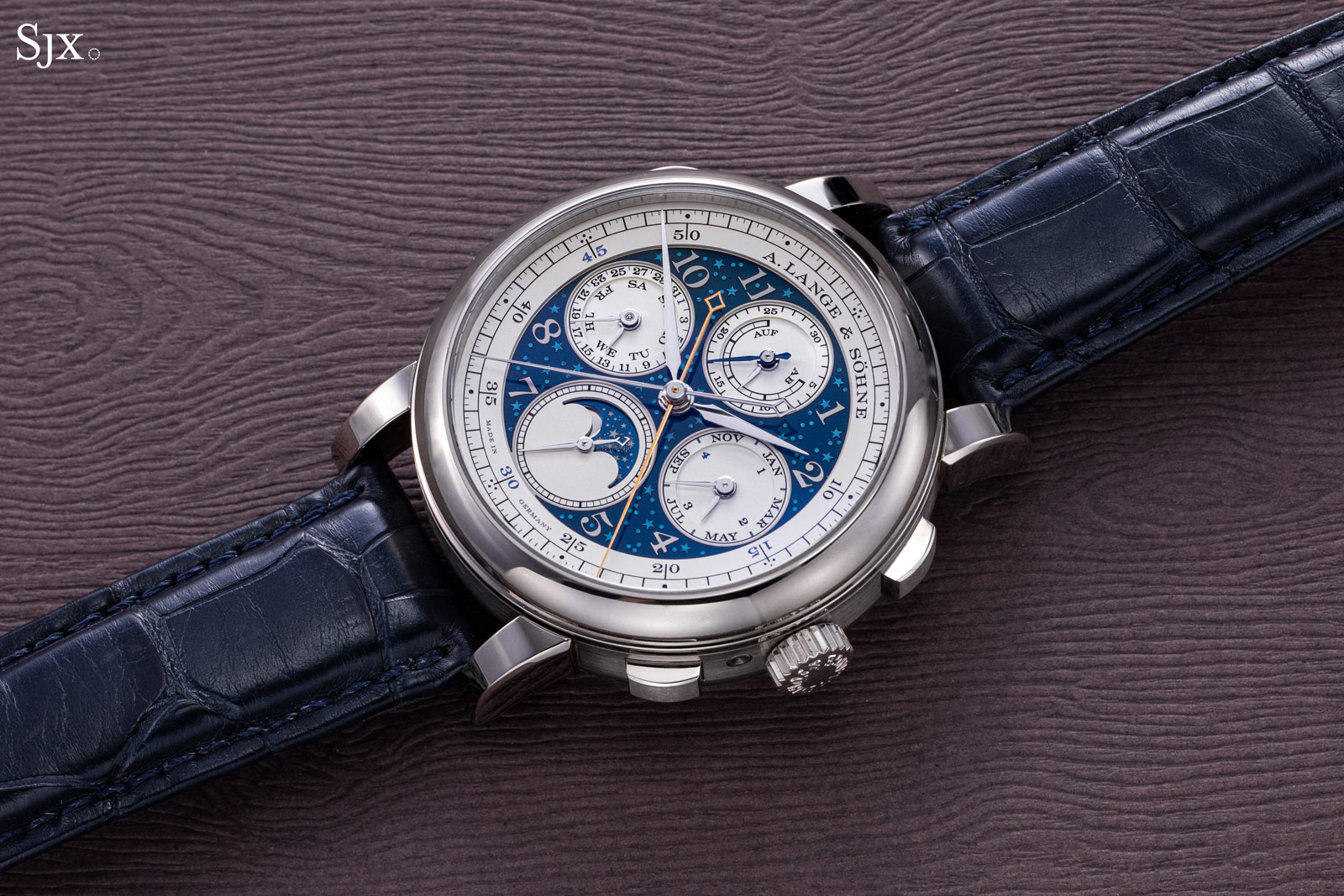
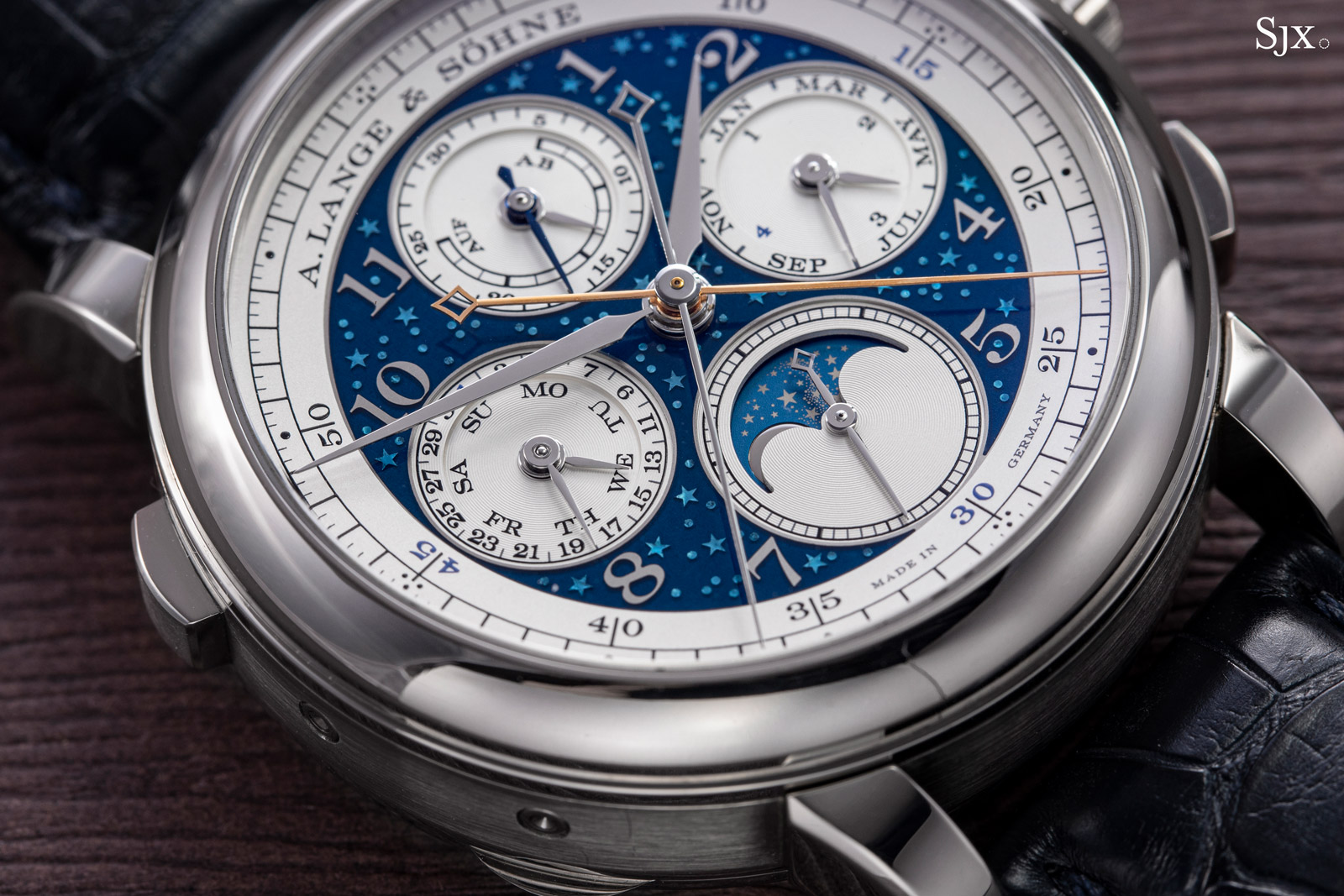
An extra found only on the Handwerkskunst edition, the hunter case back is engraved and enamelled like the dial. It continues the cosmic theme with a relief engraving of Luna, the Roman goddess of the moon, surrounded by a champleve enamel ring of clouds and stars.
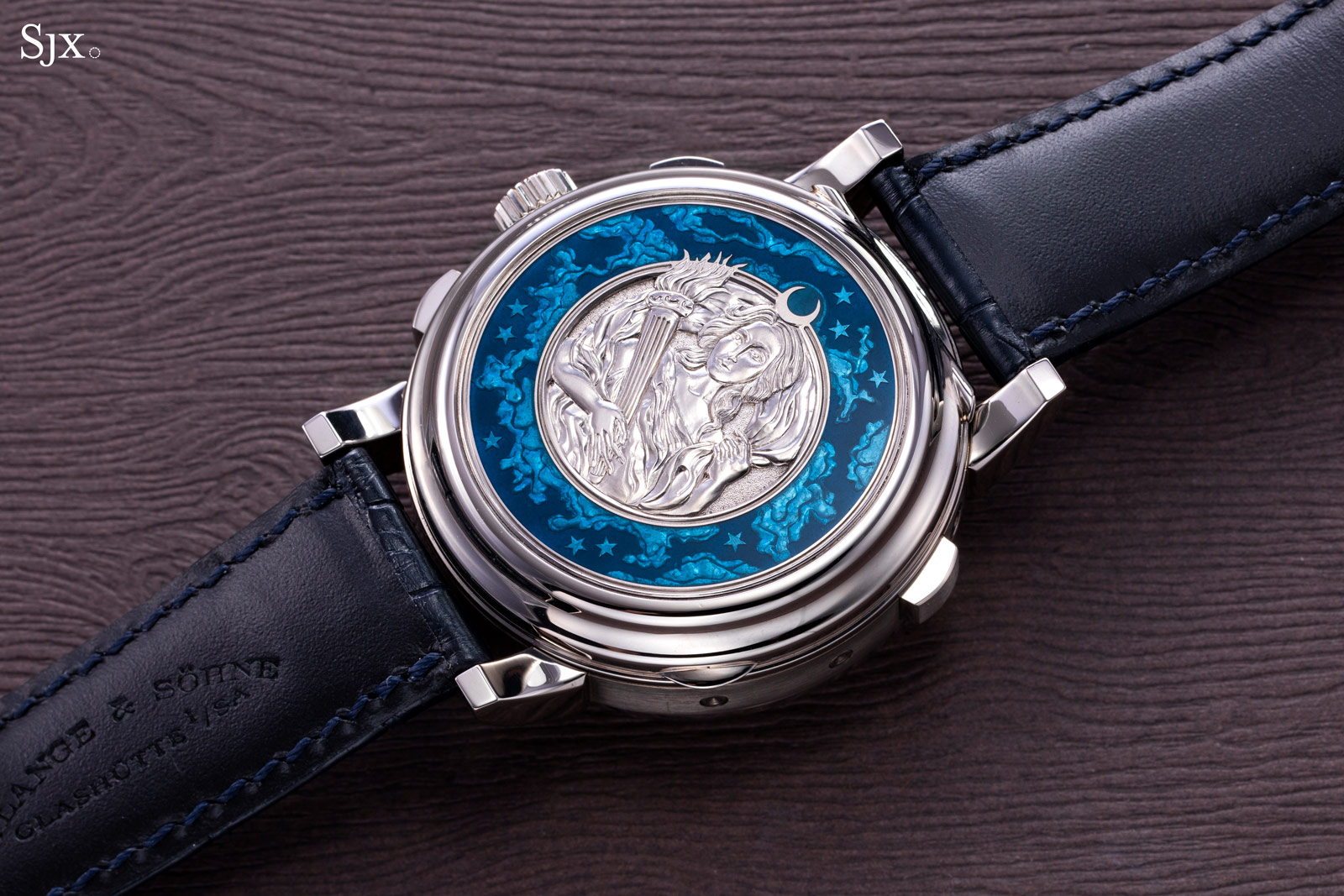
The depiction of Luna is artistic but not quite as fine as the engraving found on metiers d’art watches from Lange’s Swiss rivals
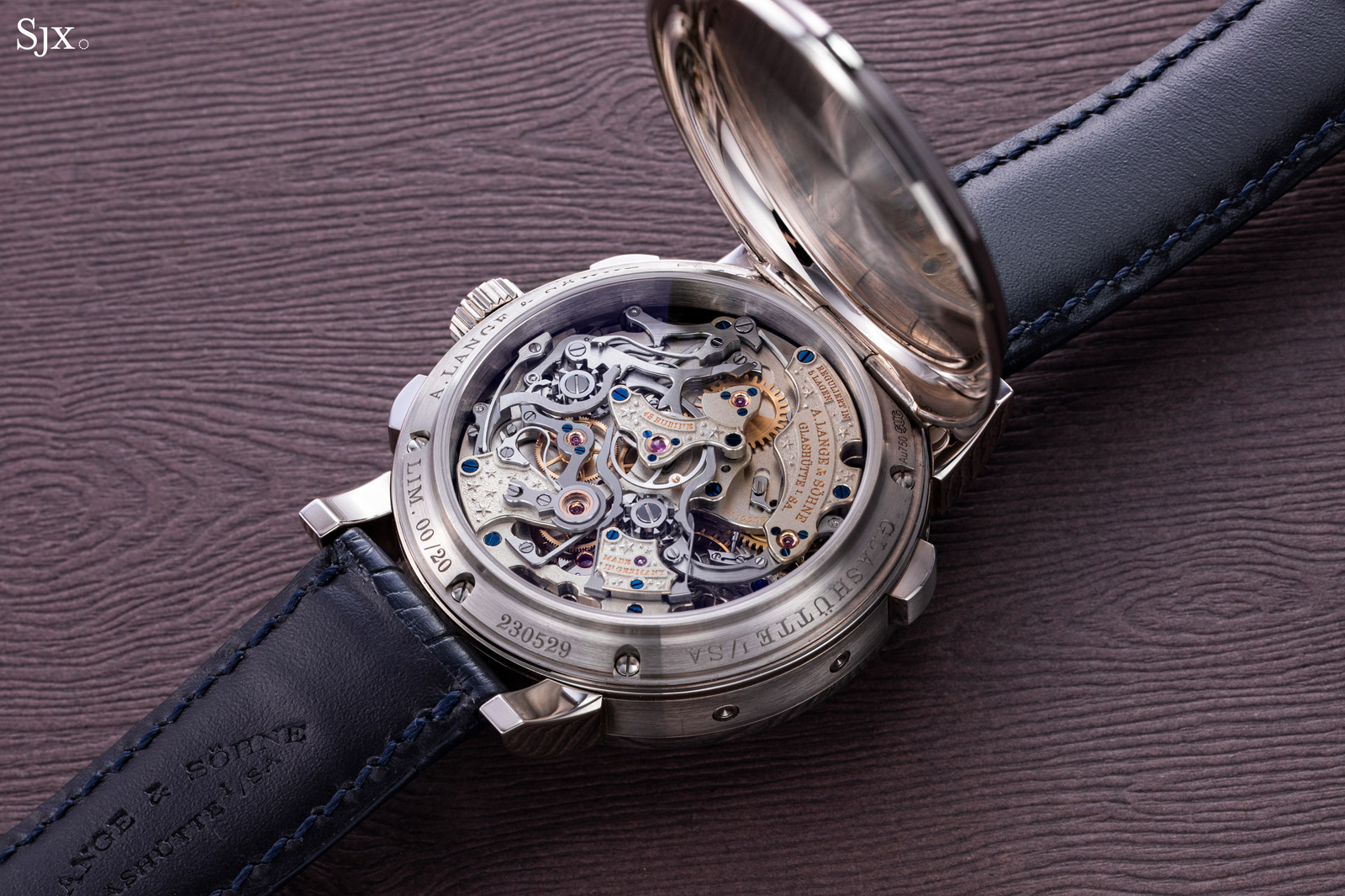
But perhaps the most intriguing – and unusual – detail is hidden under the hinged back. The movement has it bridges engraved with stars in relief. This gives it a slightly romantic aesthetic that contrast with Lange’s mechanical prowess, but it is subtle and pleasing.
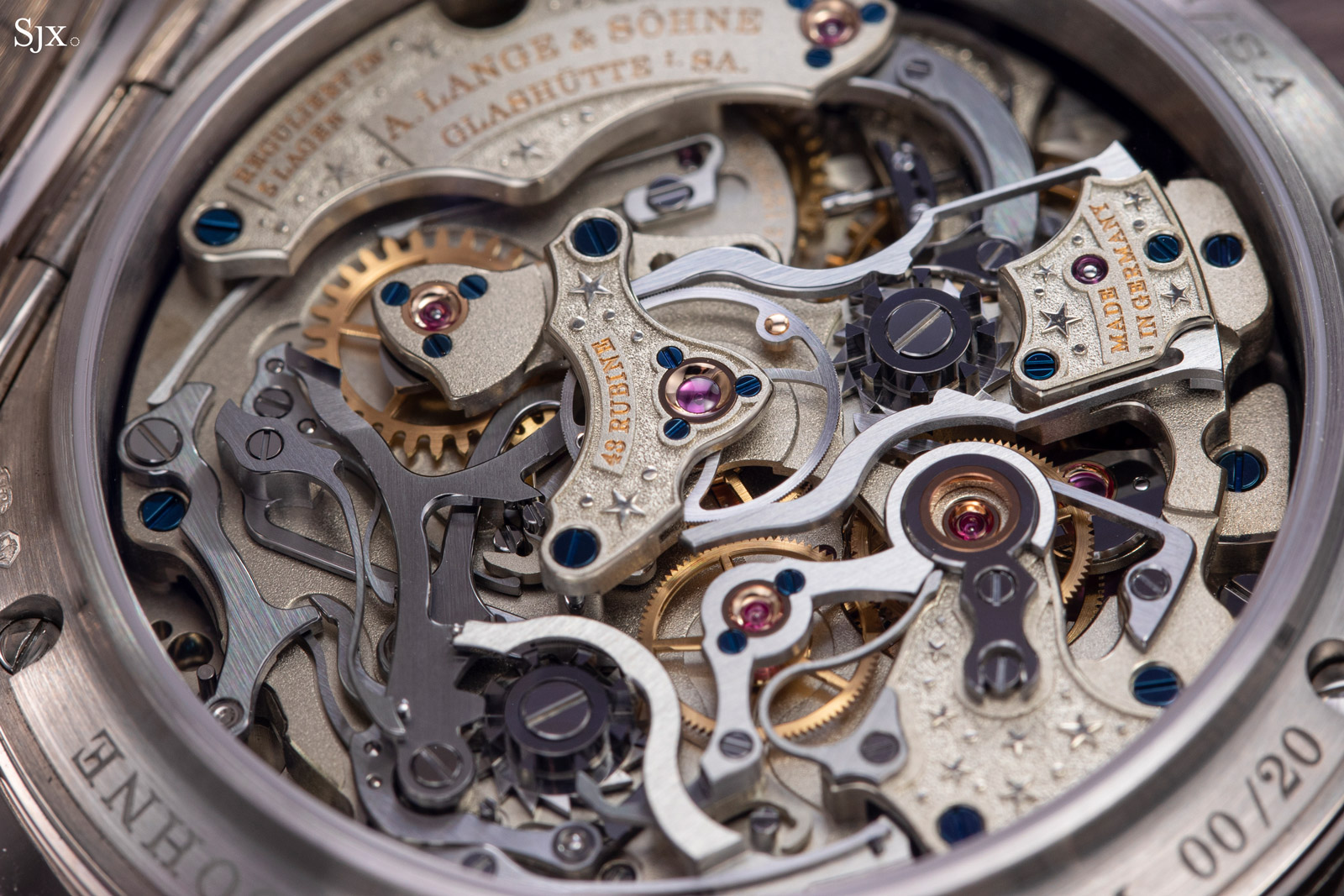
And because the movement is already extremely intricate in visual terms – the view is dominated by the split-seconds chronograph mechanism – the starry engraving recedes into the background somewhat, so it doesn’t seem excessive (which is could be argued is the case for the hunter back).
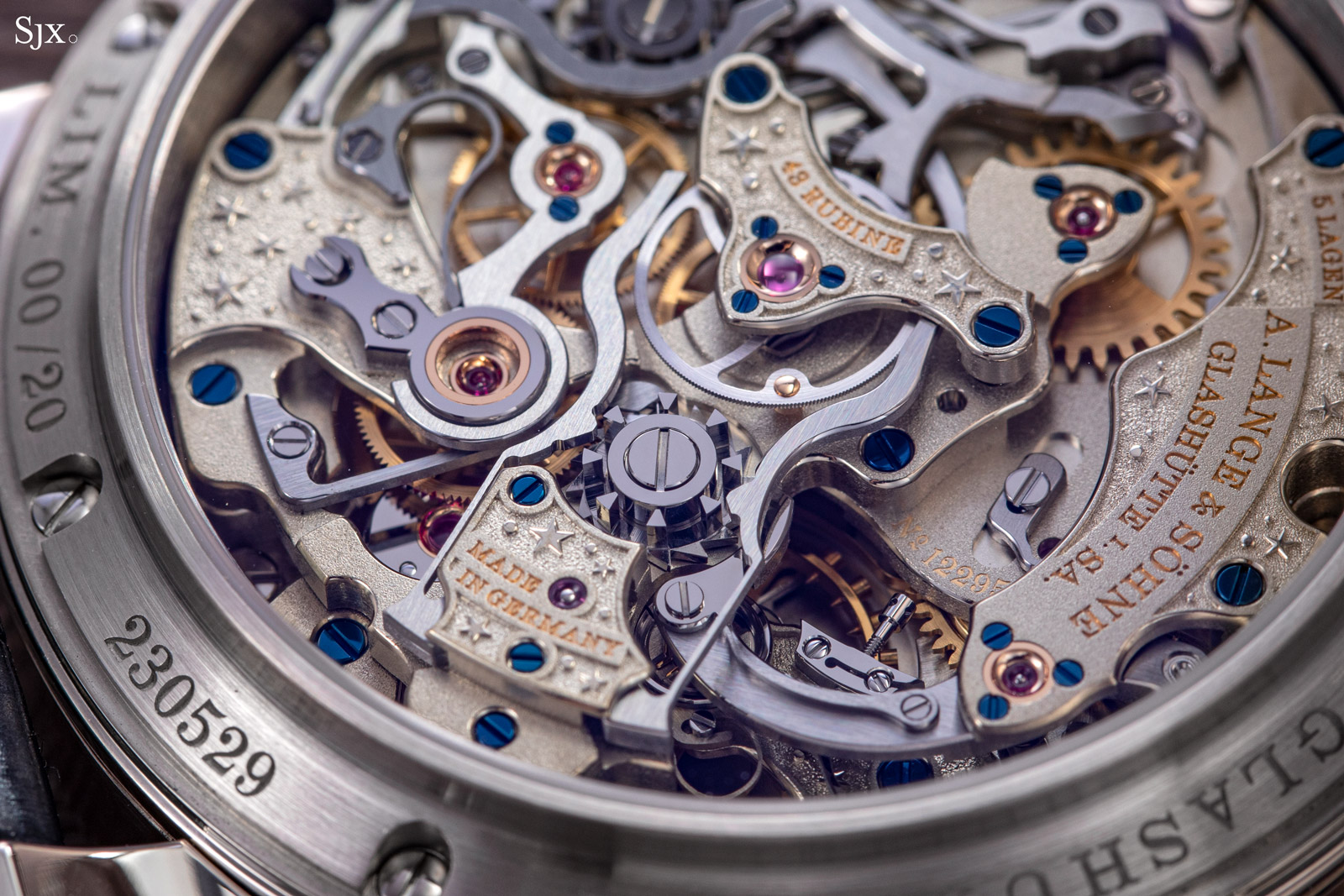
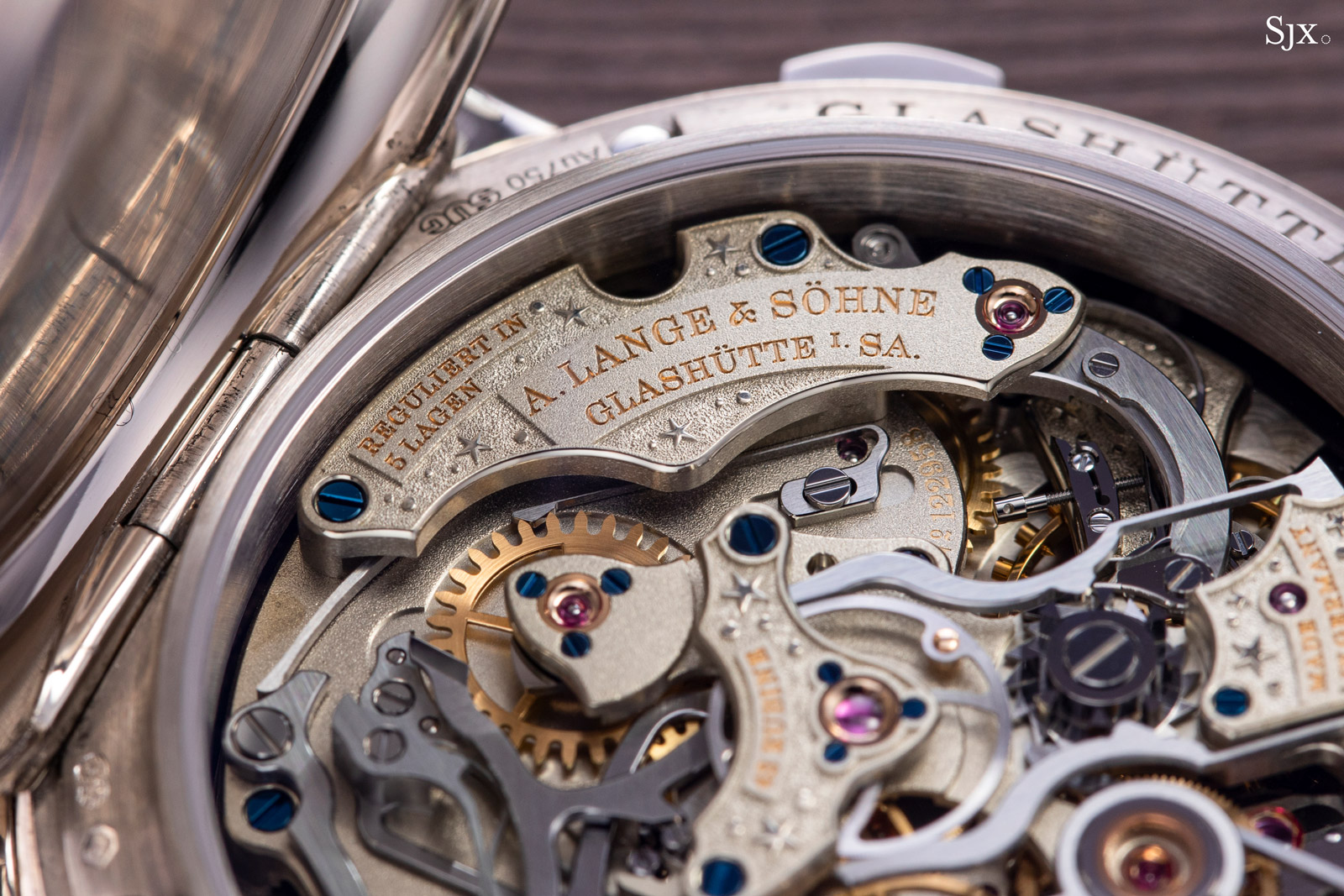
Aim for the stars – or Lange
For an in-depth look at each of the Handwerkskunst watches, see our definitive guide to the series published in 2020.
Back to top.


